
















SAFETY IS
ACCIDENT A look at the top fi ve severity exposures in the corrugated industry March/April 2023 Volume 27, No. 2 ALSO INSIDE Taking Responsibility: A Look at EPR Policy Boxmakers Beware: Cybersecurity Considerations Member Profile: Southern Carton Co. A PUBLICATION OF AICC, THE INDEPENDENT PACKAGING ASSOCIATION
NO







BOXSCORE www.AICCbox.org 1 TABLE OF CONTENTS March/April 2023 • Volume 27, No. 2 Visit www.AICCboxscore.org for Member News and even more great columns. Scan the QR code to check them out! COLUMNS 3 CHAIRWOMAN’S MESSAGE 4 SCORING BOXES 10 LEGISLATIVE REPORT 12 MEMBERS MEETING 16 ASK RALPH 18 ASK TOM 20 SELLING TODAY 24 LEADERSHIP 30 MEMBER PROFILE 56 THE ASSOCIATE ADVANTAGE 58 WHAT THE TECH? 60 STRENGTH IN NUMBERS 68 THE FINAL SCORE DEPARTMENTS 8 WELCOME, NEW & RETURNING MEMBERS 29 AICC INNOVATION 64 FOUNDATION FOR PACKAGING EDUCATION 66 INTERNATIONAL CORRUGATED PACKAGING FOUNDATION 36 44 48 BoxScore is published bimonthly by AICC, e Independent Packaging Association, PO Box 25708, Alexandria, VA 22313, USA. Rates for reprints and permissions of articles printed are available upon request. e statements and opinions expressed herein are those of the individual authors and do not necessarily represent the views of AICC. e publisher reserves the right to accept or reject any editorial or advertising matter at its discretion. e publisher is not responsible for claims made by advertisers. POSTMASTER: Send change of address to BoxScore, AICC, PO Box 25708, Alexandria, VA 22313, USA. ©2023 AICC. All rights reserved. FEATURES 36 SAFETY IS NO ACCIDENT A look at the top five severity exposures in the corrugated industry 44 TAKING RESPONSIBILITY New recycling laws for packagers are gaining acceptance across the U.S., but are they overreaching when it comes to boxmaking? 48 BOXMAKERS BEWARE Protecting your systems is more than smart security—nowadays, it’s essential to your business
OFFICERS
Chairwoman: Jana Harris, Harris Packaging/American Carton, Haltom City, Texas
First Vice Chairman: Matt Davis, Packaging Express, Colorado Springs, Colorado
Vice Chairs: Gary Brewer, Package Crafters, High Point, North Carolina Finn MacDonald, Independent II, Louisville, Kentucky
Terri-Lynn Levesque, Royal Containers Ltd., Brampton, Ontario, Canada
Immediate Past Chairman: Gene Marino, Akers Packaging Service Group, Chicago, Illinois
Chairman, Past Chairmen’s Council: Jay Carman, StandFast Packaging Group, Carol Stream, Illinois
President: Michael D’Angelo, AICC Headquarters, Alexandria, Virginia
Secretary/General Counsel: David Goch, Webster, Chamberlain & Bean, Washington, D.C.

AICC Canada: Lee Gould
DIRECTORS
West: Sahar Mehrabzadeh-Garcia, Bay Cities, Pico Rivera, Califormia
Southwest: Jenise Cox, Harris Packaging/American Carton, Haltom City, Texas
Southeast: Michael Drummond, Packrite, High Point, North Carolina
Midwest: Casey Shaw, Batavia Container Inc., Batavia, Illinois
Great Lakes: Josh Sobel, Jamestown Container Cos.
Macedonia, Ohio
Northeast: Stuart Fenkel, McLean Packaging Pennsauken, New Jersey
AICC Canada: Terri-Lynn Levesque, Royal Containers Ltd., Brampton, Ontario, Canada
AICC México: Sergio Menchaca, EKO Empaques de Cartón S.A. de C.V., Cortazar, Mexico
OVERSEAS DIRECTOR
Kim Nelson, Royal Containers Ltd., Brampton, Ontario, Canada
DIRECTORS AT LARGE
Kevin Ausburn, SMC Packaging Group, Springfield, Missouri
Eric Elgin, Oklahoma Interpack, Muscogee, Oklahoma
Guy Ockerlund, OxBox, Addison, Illinois
Mike Schaefer, Tavens Packaging & Display, Bedford Heights, Ohio
Ben DeSollar, Sumter Packaging, Sumter, South Carolina
Jack Fiterman, Liberty Diversifies, Minneapolis, Minnesota
EMERGING LEADER DELEGATES
Lauren Frisch, Wasatch Container, North Salt Lake, Utah
John McQueary, CST Systems, Atlanta, Georgia
Jordan Dawson, Harris Packaging, Haltom City, Texas
ASSOCIATE MEMBER DIRECTORS
Chairman: Greg Jones, SUN Automation Group
Glen Arm, Maryland
Vice Chairman: Tim Connell, A.G. Stacker Inc Weyers Cave, Virginia
Secretary: John Burgess, Pamarco/Absolute, Roselle Park, New Jersey

Director: Jeff Dietz, Kolbus America Inc., Cleveland, Ohio
Immediate Past Chairman, Associate Members: Joseph Morelli, Huston Patterson Printers/Lewisburg
Printing Co., Decatur, Illinois
ADVISORS TO THE CHAIRMAN
Al Hoodwin, Michigan City Paper Box, Michigan City, Indiana
Gene Marino, Akers Packaging Service Group
Chicago, Illinois
Greg Jones, SUN Automation, Glen Arm, Maryland
PUBLICATION STAFF
Publisher: Michael D’Angelo, mdangelo@AICCbox.org
Editor: Virginia Humphrey, vhumphrey@AICCbox.org
ABOUT AICC
EDITORIAL/DESIGN SERVICES
The YGS Group • www.theYGSgroup.com
Vice President: Serena L. Spiezio
Content & Copy Director: Craig Lauer
Managing Editor: Therese Umerlik
Senior Editor: Sam Hoffmeister
Copy Editor: Steve Kennedy
Art Director: Alex Straughan
Account Manager: Frankie Singleton

SUBMIT EDITORIAL IDEAS, NEWS, & LETTERS TO: BoxScore@theYGSgroup.com
CONTRIBUTORS
Maria Frustaci, Director of Administration and Director of Latin America
Cindy Huber, Director of Conventions & Meetings
Chelsea May, Education and Training Manager
Laura Mihalick, Senior Meeting Manager
Patrick Moore, Membership Services Manager
Taryn Pyle, Director of Training, Education & Professional Development
Alyce Ryan, Marketing Manager
Steve Young, Ambassador-at-Large
ADVERTISING
Taryn Pyle 703-535-1391 • tpyle@AICCbox.org
Patrick Moore 703-535-1394 • pmoore@AICCbox.org
AICC
PO Box 25708
Alexandria, VA 22313
Phone 703-836-2422
Toll-free 877-836-2422
Fax 703-836-2795 www.AICCbox.org
PROVIDING BOXMAKERS WITH THE KNOWLEDGE NEEDED TO THRIVE IN THE PAPER-BASED PACKAGING INDUSTRY SINCE 1974
We are a growing membership association that serves independent corrugated, folding carton, and rigid box manufacturers and suppliers with education and information in print, in person, and online. AICC membership is for the full company, and employees at all locations have access to member benefits. AICC o ers free online education to all members to help the individual maximize their potential and the member company maximize its profit.
WHEN YOU INVEST AND ENGAGE, AICC DELIVERS SUCCESS.
Education for Your People
Ahot topic of 2023, thus far, has been what our industry will look like after experiencing the past two unprecedented years of growth and chaos during the COVID-19 pandemic. Board Converting News covered this topic in Len Prazych’s article, “Converter Outlook, 2023, Part 1: Shrinking Demand Is Concerning,” showcased in January. I had the privilege of being one of the contributors, along with a handful of other independent converters. The consistent theme was that we as independents in our industry not only survived but thrived, despite one challenge and obstacle after another.
The consensus regarding 2023 was it should be a good year. However, we all are feeling softening in the market and expect that to remain the trend throughout 2023. This is the same concern that AICC’s Membership and Marketing Committee recently expressed at its past meeting. AICC President Mike D’Angelo reached out to me after this meeting and shared their sentiments. He said, “There was discussion that the softening in the market that converters are feeling at this time is a great time to double down on your commitment to your most important resource—your people. You do that by getting more education in front of them.”
This was music to my ears. What a great time for us as owners and managers of our independent box companies, as well as our incredible vendors, to utilize all that AICC has to offer in education. Below are some of the resources AICC has for its members:
• Free online education: More than 100 courses are offered online for all of our employees. There is training that supports all aspects of your business—production, sales, service, design, finance departments, human resources, and leadership training, to name a few. Currently, 18 online courses are offered in Spanish, with the commitment from AICC to continue translating more courses on a consistent basis.
• All Access Pass: More than 150 industry-specific live and prerecorded webinars and One Point Lessons allow employees to get quick tips and tools to enhance their skills. The one-time fee is minimal compared with the value your company will receive.
• AICC NOW (AICC’s new streaming website): AICC NOW brings all of AICC’s videos and online content to one easyto-navigate location. You can now access AICC’s vast media offerings, which include the Packaging University, webinars, podcasts, Ask the Experts, white papers, and more. Visit NOW.AICCbox.org for more information.
• Breaking Down Boxes podcast: Listen to Gene Marino and Joe Morelli converse with entrepreneurs in the independent packaging space. AICC members tell their compelling stories and the lessons they have learned along the way. Listen to past episodes anytime; new episodes are released the first Monday of every month. Tune in to hear what takeaways and valuable insights the podcast and our fellow AICC members have to offer.
So, as we slow down a bit, take advantage of this time and share this knowledge with your employees. As I like to say, “Better Minds, Better Boxes.” Invest in your company’s future through education.
Cheers to a happy, healthy, and prosperous 2023!
Jana Harris CEO and Co-owner, Harris Packaging and American Carton Co. AICC Chairwoman
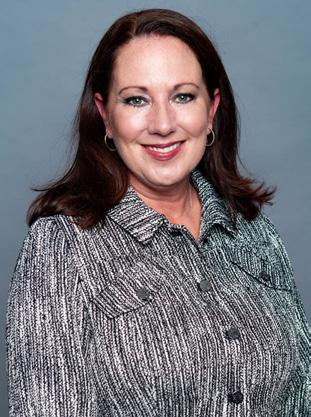
BOXSCORE www.AICCbox.org 3 Chairwoman’s Message
Manufacturing Slides Into Recession
BY DICK STORAT
The Institute for Supply Management publishes a monthly report on economic activity in the manufacturing sector based on survey responses from several hundred supply chain managers across the full spectrum of manufacturing in the U.S. Recent reports show a faltering expansion in factory output, and many forecasters expect the slowdown to continue this year.
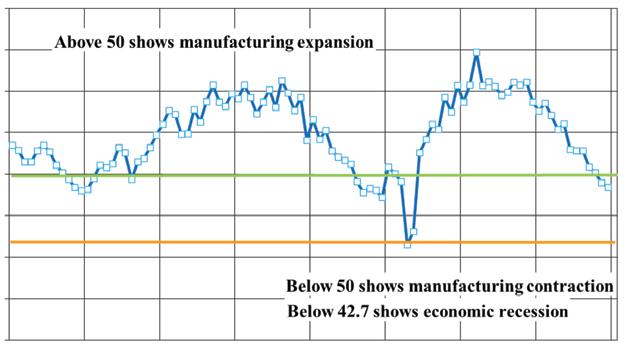
According to that survey, the manufacturing sector contracted for the second consecutive month in December, following 29 months of expansion. As shown in the top chart to the right, the overall index clocked in at 48.6% in December when only two of 18 industry sectors reported growth: petroleum and coal products, and primary metals. Thirteen sectors, including paper products, contracted in December, according to survey respondents.
Labor management sentiment continued to shift, with several panelists’ companies reducing employment levels through hiring freezes or attrition.
Demand, which had been bolstered by resilient consumer spending during the year, weakened in December. The New Orders Index fell to 45.2%, marking the third consecutive month of shrinking sales. Export orders also contracted markedly, reported at 46.2%, while backlogs were at historically low levels.
As the overall economy seems to be heading toward slower growth or perhaps a contraction later this year, demand for manufactured goods is not likely to grow at the pace experienced during the past two years.
While overall manufacturing activity faltered, production of nondurable consumer goods, the largest consumer of boxes and related packaging, continued to
show monthly gains as the year came to a close. Th rough November, production of these fast-moving goods had risen by 2.9%. The details of 2022 food production statistics are summarized in the bottom chart on this page.
Food makes up one of the largest components of nondurable goods, and most food
products are intense consumers of paper packaging. Food production remained elevated throughout the past year and had grown by 4.5% during the year through November, as shown in the top chart on page 5. Total food production consistently outpaced its prior-year output for a total of 21 consecutive months ending in November.
Purchasing Managers’ Index

BOXSCORE March/April 2023 4 Scoring Boxes
Source: U.S. Census Source: Institute for Supply Management Industrial Production Nondurable Consumer Goods
Sales by Business (2022 YTD Percent Change Through November)
Retail
U.S. Food Production Industrial Production Nondurable Consumer Goods Retail Sales by Business (2022 YTD Percent Change Through November)
Index U.S. Food Production 15 16 17 18 19 20 21 22 30 35 40 45 50 55 60 65 70 2021 2022 Percent C hange Year-to-Dat e 2020 J AN FEB MAR AP R MAY J UN J UL AUG S EP OC T NO V DEC Index (2017 = 100) 0.0% 0.5% 1.0% 1.5% 2.0% 2.5% 3.0% 3.5% 4.0% 4.5% 90 92 94 96 98 100 102 104
Purchasing Managers’
Truck. Loads . More.

Corrugated printing has gone from basic to beautiful in 10 year s. With the explosion of packaging demands and shor ter print runs, speed has become the #1 capacit y driver. One of our customers tells us automated complete plate cleaning in < 4 minutes adds 25% capacit y in a working week with FlexoCleanerBrush™
He calls it ‘Truckloads More Capacit y’. You can do your own math.


Scoring Boxes
Purchasing Managers’ Index
Even though total food production rose by 4.5% through November, individual food product categories showed a range of change. The table below shows the year-to-date
percentage production growth for a range of foods.
For those interested in exploring the range of products for which monthly growth indexes are published
Retail Sales by Business
by the Federal Reserve Board, visit www.federalreserve.gov and select Industrial Production and Capacity Utilization.
Inflation became a major economic factor during 2022. Between November 2021 and November 2022, the consumer price index rose by 7.1%. The bottom chart at left shows the breakdown of retail sales by business for the past year through November. However, those data are not adjusted for inflation, so they need to be discounted for inflation. The year-to-date growth rate of all retail and food service sales was 9.6% as initially reported, but after considering the impact of inflation, growth was more in the range of 2%–3%.
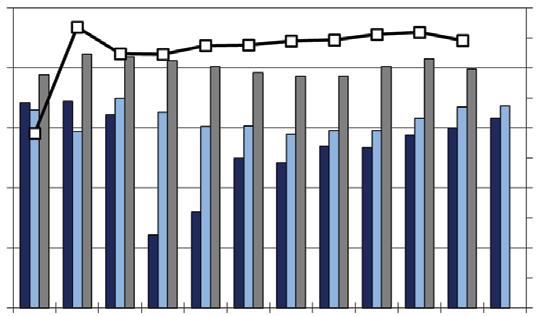
Managers’ Index
Food service accounts for some 13% of retail and food service sales and was hardest hit for the longest time during the COVID19 pandemic. Its recovery rate of 17.6% this past year just barely brings them out of the depression the pandemic placed them in.
The largest single channel of retail sales has become sales made by nonstore retailers—mostly e-commerce sales. These sales accounted for 15.8% of retail sales this past November, having unseated general merchandise and department stores as the largest retail sales channel. Growth of online sales remained in double digits this past year, measuring 10.2% through November.

Retail Sales by Business
Food and beverages sold for offpremises consumption at food and grocery stores accounted for 11.8% of sales during the same period and grew at 7.8% through November—relatively flat considering the impact of inflation.
Sales of building materials grew around the same rate as food and beverages this past year, and elevated growth will likely continue in the aftermath of destructive weather.
Dick Storat is president of Richard Storat & Associates. He can be reached at 610-282-6033 or storatre@aol.com

BOXSCORE March/April 2023 6
Sources: U.S. Census, RSA Inc.
Federal Reserve FOOD CATEGORY % CHANGE YTD, NOVEMBER 2022 Animal Foods 0.0% Sugary Products 4.5% Preserved Fruits & Vegetables 3.8% Dairy Products -1.4% Meat Processing 1.7% Poultry Processing 6.7% Beverages 4.0% Bakeries -0.4% Industrial Production Nondurable Consumer Goods
Source:
(2022 YTD Percent Change
Through November)
Food Production Industrial Production Nondurable Consumer Goods
U.S.
(2022 YTD Percent
U.S. Food Production -35.0% -25.0% -15.0% -5.0% 5.0% 15.0% 25.0% 2021 2022 Percent C hange Year-to-Dat e 2020 J AN FEB MAR AP R MAY J UN J UL AUG S EP OC T NO V DEC Index (2017 = 100) 0.0% 0.5% 1.0% 1.5% 2.5% 2.0% 3.0% 3.5% 4.0% 4.5% 5.0% 85 90 95 100 105 110
Change Through November) Purchasing
Quality & Consistency


Produce Better Quality Graphics




ThermaFlo™ Brings HD Graphics To Corrugated Printing

With a consistent cell geometry that promotes ef cient ink-release, atter cell walls for better ink metering and due to our multi-hit technology - you can get extended volume ranges.


Welcome, New & Returning Members
Welcome, AICC’s New Members!
WORKSTREAM CADE TWITTY
Demand Generation Senior Associate
2600 W. Executive Pkwy. Suite 200 Lehi, UT 84043
801-376-7620
www.workstream.us
PRAGATI PACK INDIA PVT., LTD.
ANANTH KUMAR G.
Chief Operating Officer
Plot No. B5 & 6, IDA Gandhinagar, Kukatpally, Hyderabad, Andhra Pradesh 500037
India
www.pragati.com
STAMBAUGH NESS
LEIGH ANN WILSON
Director of Manufacturing Strategy
220 St. Charles Way, Suite 150 York, PA 17402 717-757-6999
www.stambaughness.com
ePRODUCTIVITY SOFTWARE
ALEKS ZLATIC General Manager
11545 W. Bernardo Court, Suite 305 San Diego, CA 92127 412-456-1141

www.eproductivitysoftware.com
VEGA SRL
ROBERTA MASTRANGELO
Digital Media Manager
Viale Dell’Industria 6 20037 Paderno Dugnano, MI
Italy
+39 02 99046212
www.vegagroup.it/en
PROCURE ANALYTICS
MATT REDDINGTON
Vice President of Operations
3101 Towercreek Pkwy., Suite 500 Atlanta, GA 30339 404-723-0501
www.procureanalytics.com
BOXSCORE March/April 2023 8
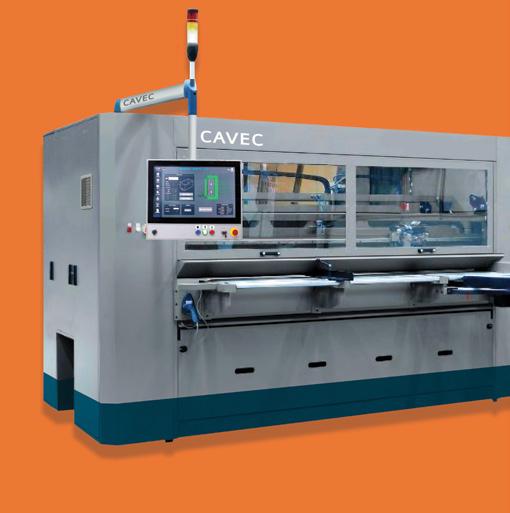




















What’s Ahead?
BY ERIC ELGIN
I’m writing this article in early 2023 just as Congress reconvened. Consequently, there’s a lot of speculation about what’s ahead for business-related legislation with a Republican-led House of Representatives.
AICC is a longtime member of the Small Business Legislative Council (SBLC), and AICC President Mike D’Angelo is a member of its board of directors. SBLC, in our view, has the best track record in keeping us apprised of issues and how they are likely to affect AICC members in their day-to-day business. So, with that in mind, let’s look at a few issues SBLC has brought to our attention for the fi rst session of this 118th Congress.
Taxes
For those of you who may have regularly attended our annual Washington Fly-Ins 10–12 years ago, you may recall our continual drumming for making the R&D tax credit permanent. It was typically renewed on a one- or two-year basis through various tax bills, but the business community wanted a permanent fi x. The Tax Cuts and Jobs Act of 2017 included a longer-range “fi x” to the question of the R&D tax credit, but it, too, set an expiration date of December 31, 2021. We see the restoration of this tax credit as an important priority for small and medium-sized businesses. Whether it can get passed in this new Congress remains to be seen.
FTC to Ban Noncompetes?

Th is one came out of the blue: The Federal Trade Commission (FTC) on January 5 issued a proposed rule that, if enacted in its current form, would prohibit
businesses from entering into or attempting to enforce noncompete agreements with their employees. Claiming that these agreements artificially depress wages because they prohibit workers from seeking more lucrative employment opportunities elsewhere, FTC says the rule will apply to contractual provisions such as “excessively broad nondisclosure agreements.” We don’t know exactly how many AICC members would be affected by this, but whether you’re a boxmaker or supplier, you likely have noncompetes in your agreements with your key employees—general managers, sales managers, and the like. These protect your proprietary information without, in my view, undue burden on the employee in their search of new employment. AICC is likely to issue comments on this proposed rule during the 60-day period, so stay tuned.
SEC Rules on ‘Climate Change’
The Securities and Exchange Commission (SEC) is also set to release fi nal rules in early 2023 on climate change disclosures.
The new rules are expected to require companies to report greenhouse gas emissions and other climate “risks” when they make fi lings with SEC. While this affects only public companies, it stands to reason that private companies such as AICC members will see another wave of “vendor certifications,” meaning boxmakers will have to satisfy their customers’ ongoing demands for corrugated packaging’s impact on the environment, which we all know is minimal.
Add to these issues the U.S. Department of Labor’s ongoing scratching into overtime rules and classifications for independent contractors, and you can see that our “what’s ahead” is likely to be very interesting.
Eric Elgin is owner of Oklahoma Interpak and chairman of AICC’s Government Aff airs subcommittee. He can be reached at 918-687-1681 or eric@okinterpak.com

BOXSCORE March/April 2023 10 Legislative Report







GEO. M. Martin Company • 1250 67th Street Emeryville, California 94608, United States 510.652.2200 • Fax 510.652.6447 • email info@geomartin.com The Martin logo and the word Scrubber are Registered Trademarks of the Geo. M. Martin Company. ROTARY DIE CUTTER STACKERS & PERIPHERALS SQC/SQX DIVERTER with optional SCRUBBER® TECHNOLOGY Q High-speed sampling Q Outstanding board control Q Automatic set-up Q Enhanced scrap removal Q LQC - Length Quality Control System LEARN MORE www.geomartin.com AUTOMATED SHEET SAMPLING
AICC México Meets in Guadalajara With 200-Plus Attendees
More than 200 AICC México members met November 15–17 in Guadalajara, Mexico, for the 2022 AICC México Annual Meeting and Trade Fair. The two-day event offered educational seminars, general session presentations, and a trade fair featuring 37 suppliers of corrugated machinery, equipment, and services. Also on the agenda was a tour of Cartographic, a corrugated and folding carton operation in the nearby town of El Salto.
The meeting began Tuesday, November 15, with a daylong seminar by R. Andrew Hurley, Ph.D., a professor of packaging science at Clemson University in South Carolina. Titled “Packaging Design Workflow Process Mapping,” the five-hour session looked at a seven-step process of design for customer-focused sustainable packaging (see sidebar, p. 14).
The meeting continued Wednesday, November 16, with general session presentations from several industry and
business management speakers. Sergio Menchaca, CEO of EKO Empaques, opened the session and welcomed attendees. Noting the growth of AICC México in the past two years,

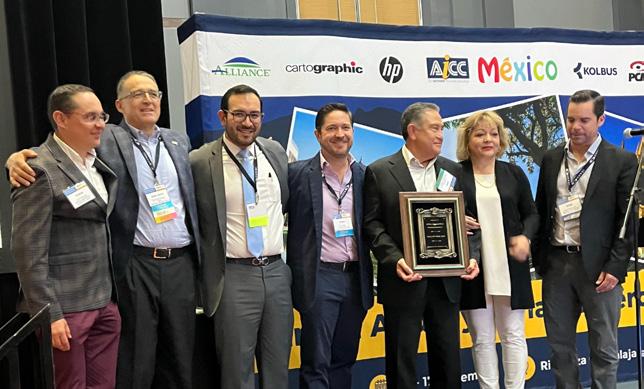
he reported that the Association has 75 member companies, up from 40 in 2019. He then welcomed AICC President Mike D’Angelo, who reported on activities at AICC at large and urged members of AICC México to participate in the Association’s Spanish-language training programs and online courses. AICC Chairwoman Jana Harris, CEO of Harris Packaging and American Carton Co. in the Dallas-Fort Worth metro area, also gave welcoming remarks, noting the need for more education about our industry in colleges, universities, and trade schools.
The featured industry speaker of the morning was Mark Wilde, senior paper and packaging analyst with BMO Capital in New York, who gave an overview of the containerboard and corrugated markets in North America. He noted the recent months’ decline in box demand and the resulting softening
BOXSCORE March/April 2023 12
Members Meeting
AICC México members gather around Jose Agustin Diaz Pacheco (center) of EAM Mosca, who was inducted into AICC México’s Hall of Fame, at the 2022 AICC México Annual Meeting and Trade Fair in November in Guadalajara, Mexico.
Sergio Menchaca (left), CEO of EKO Empaques and AICC México, presents R. Andrew Hurley, Ph.D., professor of packaging science at Clemson University, with a token of appreciation for his presentation.
Photos courtesy of AICC










Members Meeting
of containerboard markets and predicted the major producers will soon be announcing the closure of older mill assets, adding that new capacity coming onstream in 2023 will also put downward pressure on paper prices.
Juan Javier Gonzalez, CEO of Cartró, a major independent supplier of sheets located in the Mexico City area, presented a leadership discussion on the qualities and characteristics of the chief executive. Saying that most management and leadership training focuses on the lower-level positions in the company and overlooks the CEO, Gonzalez outlined key characteristics needed for a successful company executive. They include mental and physical energy, a sound mind, emotional equilibrium, maturity, good work habits, and refi ned social skills. All these, he said, contribute to eff ective and ethical leadership.
Continuing in the program, Rodrigo de León González, a professor of political science and economics at the Instituto Panamericano de Alta Dirección de Empresa, spoke about the new geopolitical order in the postpandemic world and Mexico’s increasingly important role. He cited four factors that will influence the geopolitical structure into the mid-21st century: demographics, geopolitics, democracy, and sustainability.
Rounding out the day’s keynote presentations was Simon Cohen, CEO of global logistics company Henco, who discussed “The Secrets of an Entrepreneur Who, in Search of Success, Found Happiness.” Cohen described how in his early days of building his company he suffered a heart attack and, in rehabilitation, reordered his life priorities to family, faith, and friendship. His book, Pleno, tells the story of his journey.
The program also included AICC México’s annual Hall of Fame award presented this year to José Agustín Díaz Pacheco of EAM Mosca. He has been a member of AICC México’s board of directors since 2002 and has been instrumental in its growth over the past 20 years.
A trade fair featuring 37 key industry suppliers and a tour of graphic packaging company Carographic rounded out the meeting. Meeting sponsors were HP, PCM, SUN Automation Group, Alliance Machine Systems, Kolbus, SRC, Apex International, ALHU International, Grupo Gondi, EAM Mosca, BCM Inks, BIMAC, Policart, Macarbox, MATEC, ICASA, Erhardt+Leimer, and Carton.com.
For more information about AICC México and its annual meeting, contact AICC Latin America Director Maria Frustaci at mfrustaci@AICCbox.org.
DESIGNERS, CUSTOMER SERVICE, AND SALES REPS LEARN DESIGN PROCESS WORKFLOW IN GUADALAJARA
R. Andrew Hurley, Ph.D., a professor of packaging science at Clemson University in Clemson, South Carolina, and a frequent speaker at AICC-sponsored seminars and workshops, led a five-hour seminar on design process workflow at the 21st AICC México Annual Meeting and Trade Fair in November in Guadalajara, Mexico. More than 50 people attended, including designers, customer service and sales reps, and production schedulers and managers.
Hurley’s seminar focused on the seven-step workflow process necessary to ensure sustainable design in packaging. This includes defining the customer’s objectives, considering the product life cycle, and establishing simple and attainable goals chosen from the United Nations’ 17 objectives for sustainable development. Throughout the day, attendees worked in teams to brainstorm ideas, present concepts, and ultimately develop prototypes, which they then presented to the whole group.
Hurley is a regular presenter at AICC national and international meetings. For more information about his presentation or AICC México’s 2022 Annual Meeting and Trade Fair, contact AICC Latin America Director Maria Frustaci at mfrustaci@AICCbox.org

BOXSCORE March/April 2023 14
R. Andrew Hurley, Ph.D., professor of packaging science at Clemson University, presents a session on design workfl ow processes during the annual event in November.


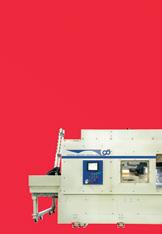

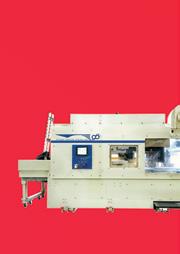






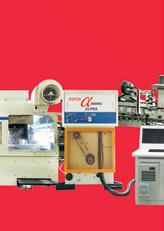







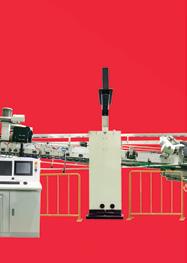






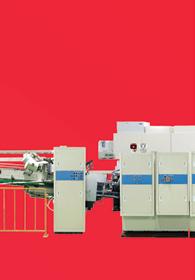
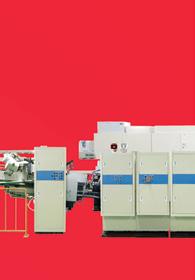
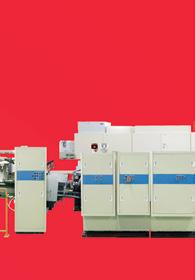
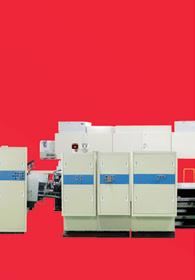
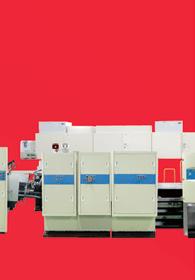




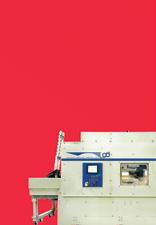

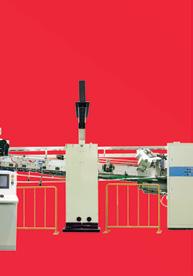






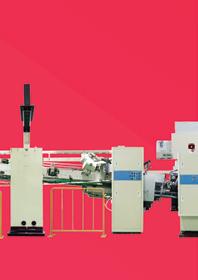
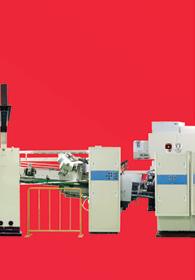



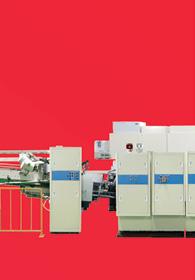
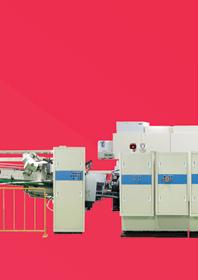


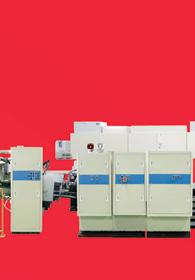
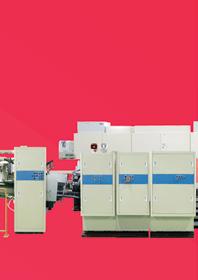















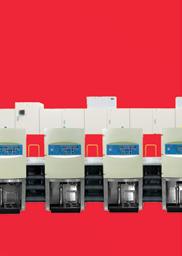

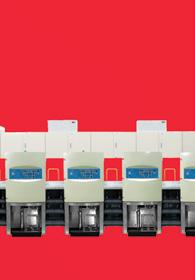
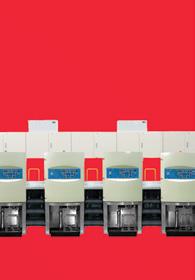






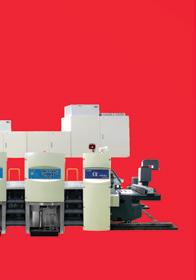
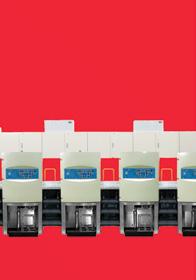

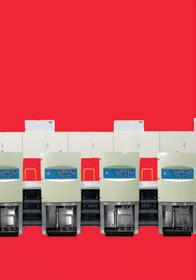











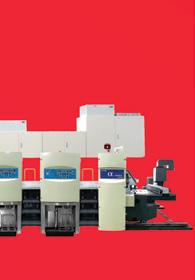

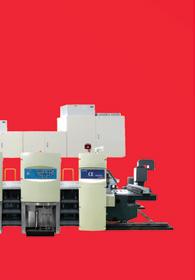


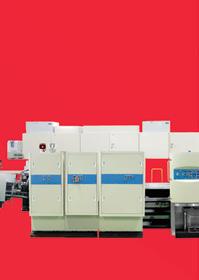


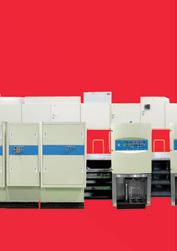

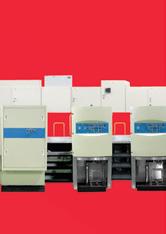
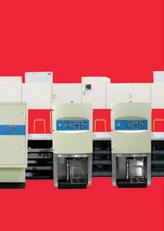




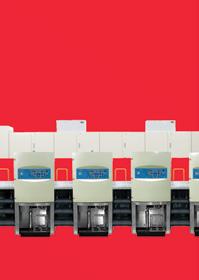
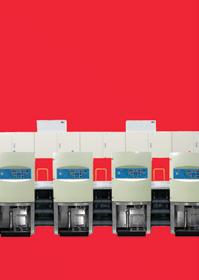








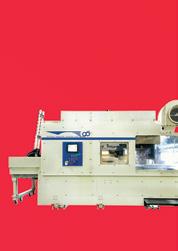



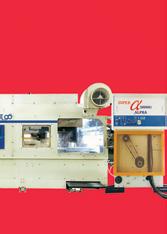





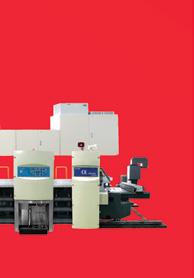
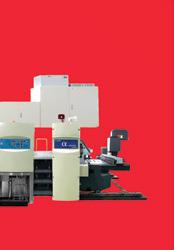














































Ask Ralph
Highlights From Recent Events
BY RALPH YOUNG
This article contains some pertinent highlights from the two recent conferences hosted by Fastmarkets: RISI and Pulp and Paper Week. We were honored to present on behalf of our industry and the independents. We have attended and delivered favorable messages on your behalf in 15 out of the 22 annual gatherings. In addition, we participate in a yearly Bank of America conference. The overriding theme throughout all of the presentations and conferences was based on how we are to live with and endure new uncertainties.
We are also often asked for our sources of information. Here are the basics:
• Scoring Boxes (monthly)
• BoxScore (bimonthly)
• Annual meetings
• Summit meetings
• National Association of Manufacturers
• Pulp and Paper Week
• Bank of America
• KeyBank
• Bank of Montreal
• Deutsche Bank
• American Forest & Paper Association public statistics (usually quarterly since 2022)
• Fibre Box Association public statistics (usually quarterly since 2022)
Capacity Changes
Internally, we track containerboard and boxboard capacity changes. Recently, we removed 550,000 tons of linerboard from WestRock because of machine closures and the shift in uncoated recycled boxboard to Sonoco and Ox Industries. We also follow the movements in other folding carton grades.
Transportation Issues
A slowing global economy, inflation, and reduced consumer spending have decreased ocean container shipments. Costs have decreased, except movements between the U.S. East Coast and the European Union. Trans-Pacific rates are down almost 75% from a year ago. Also, ocean container capacity is increasing and expected to rise 8.8% this year.
Problems with the Rhine River in Germany, much like our own watershed issues with the Mississippi River, have caused distribution challenges with materials that move by barge. A panel discussion moderated by Adam Josephson of KeyBanc Capital Markets stated there has been no backup of cargo ships at our ports since May, and there has been a 40% drop in outbound loadings.
Craig Fuller of FreightWaves said ocean rates between the U.S. East Coast and the European Union remain high. Ocean freight is dominated by a few players, and volatility always exists. New ships are being built. No one can forecast global demand. Port warehouses have been clogged. Railroad cars are expected to retire at the rate of 10,000 a year, and new rolling stock can be added at the rate of only 5,000 a year.
Macroeconomic Outlooks
There will be a drop in purchasing power, which historically has been shown to continue long after corrections in inflation rates via the Federal Reserve interest rate movements.
Even with reported “low” unemployment rates, labor supply shortages, energy disruptions, money supply, distribution logistics, government stimulus, interest rates, food shortages, shifts back from
accumulating durable and nondurable goods to services like going out to eat, inventory corrections, dollar strength, global trade disruptions, and reshoring movements are unknowns.
Global economic growth has stalled. The U.S. still appears somewhat positive in 2023, with maybe a 2.2% increase in 2024.
North American Containerboard
Manufacturing sales are good for converters, but drought conditions are creating challenges in domestic agriculture. When will inflation come under some control? The Fed raised the discount rate in December. Expect some containerboard capacity reductions, especially in high-cost kraftbased machines. We need a 3% average annual growth rate in corrugated shipments to consume all of the new containerboard coming on stream. It may be the year 2025 before a new balance is achieved.
Cost inflation has offset actual rapid containerboard price increases of the past few years.
It was said European mills can exist only with fossil fuels and may take 10 years to make the switch to other sources such as biomass.
AICC can provide some slides if you request them and can assist you in communications with your suppliers and customers.
Ralph Young is the principal of Alternative Paper Solutions and is AICC’s technical advisor. Contact Ralph directly about technical issues that impact our industry at askralph@AICCbox.org

BOXSCORE March/April 2023 16




Operational Value Analysis Focuses on Cost Takeouts for Your Business and Key Clients
BY TOM WEBER
With each new year comes the trepidation of what may be ahead for many of us as our businesses revert to what they were before the COVID-19 pandemic (possibly). Two things are certain: Nothing will remain the same, and if we apply the correct resources toward our clients, better days will be ahead. This is the foundation for my following suggestion: to capitalize on the available human capital we have on hand who may, for the first time in a few years, have some time to focus on cost takeouts for your businesses and key clients.
The use of this approach is certainly not new, but it does require willing participants, some scheduled time, discipline, and the right mix of team members to ensure success for both parties. It is important to note that cost takeouts manifest themselves in unique ways, and possibly, cost-sharing may ultimately need to be established.
The following is an operational value analysis template that I was trained in from my days with Tenneco Packaging in the 1990s. I am happy to share it, and if any further explanation is necessary, please reach out to me.
Note: A suggested question to ask after you possibly identify your top five clients to discuss this approach with depending on your internal and external available resources is, How do we get started, and when?
Let’s make it another great year together.
Tom Weber is president of WeberSource LLC and is AICC’s folding carton and rigid box technical advisor. Contact Tom directly at asktom@AICCbox.org

Example Operational Value Analysis (OVA)
Jointly Developed OVA Team for Major Cost Takeouts
Objective:
$300,000 cost takeout initiative—targeting a minimum of $15,000/quarter and/or $60,000/year.
Term:
Supply agreement for three years in place, effective Jan. 1, 2023, through Jan. 1, 2026.
Team Dynamic:
Two to three rotational team members from each company meeting on predetermined quarterly dates and times, publishing meeting minutes to senior leadership, and developing specifi c action plans to implement with costouts associated. Meetings are intended to be rotational in nature between customer and supplier facilities. No single facility contributes alone.
Initial Suggested Team Leaders:
• Supplier OVA team: rotational with plant, sales, engineering, and maintenance leadership.
• Customer OVA team: TBD.
• Possibly request key outside suppliers to participate.
Documented Savings: Agreed upon in writing by all team members/leaders with details, responsibilities, and materials/process steps needed to implement. (Objectives should be low to no capital required.)
OVA KEY DISCUSSION POINTS
Defi nitions:
• OVA is an orderly and creative method to increase the cost-effectiveness of a manufacturing operation.
• An operation that performs better than another provides more value to the company.
• The lowest-cost item that performs equally well as another has more value to the company.
How It Is Accomplished:
• Component cost takeouts.
• Reduction of redundant processes.
• Reduction of secondary processes.
• Facilitation of flexibility in thinking and exploring multiple concepts.
• Focusing on essential functions to meet end-use product requirements.
• Identification of “low-hanging fruit” to drive a change culture.
• Utilization of a capital “lite” mentality.
Why Us:
• Proper assessment of the customer’s needs.
• Appropriate acknowledgment of customer priorities.
• Obtaining and utilizing 100% of customer feedback.
• Focusing on material usage, reduced waste, and significant operating costs.
• Reduced shipping, handling, and distribution costs.
• Increased customer satisfaction.
• Increased employee morale from being part of the solution.
BOXSCORE March/April 2023 18 Ask Tom


























JB MACHINERY ® Productivity — Quality — Profitability JB Machinery Inc., | +1-203-544-0101 | jbmachinery.com INCREASE your profitability with all JB products. MAXIMIZE your profitability when you bundle one or more on new or existing converting lines. Save Labor/Energy Save Labor/Materials Save Labor/Time ® InKomand® This Ad Maximizes PROFITS
Strategies for Selling in Challenging Times
BY TODD M. ZIELINSKI AND LISA BENSON
The paper-based packaging industry is facing challenging times. High inflation and rising prices have consumers and businesses cutting back on spending. Recent years have seen a boom in the corrugated market as prominent e-commerce companies such as Amazon significantly increased their corrugated packaging use. At the end of 2022, retail sales were down in many categories, which, in turn, reduced the demand for corrugated. As the situation changes, corrugated companies must plan strategically to remain competitive.
A large key account can be demanding and often get preferential treatment, and as a result, smaller accounts see longer lead times as their orders get pushed back to accommodate the increased demand. The supply chain disruptions made the situation worse. Over the past few years, these smaller accounts could often fi nd
relief from small independent corrugators that could meet the required lead times. However, as the economy continues to struggle, large retailers are pulling back, opening capacity for large integrated companies that have the advantage of lower unit pricing. Th is makes the market much more competitive for small independents.
To remain viable, corrugated manufacturers must continue to deliver value to their customers. This means understanding who your customers are and providing them with solutions that alleviate or mitigate their pains or challenges. The goal isn’t to close a sale. It is to develop a relationship with your customer in which you are seen as a solution provider and not the boxmaker.
Know Your Target Market
Before selling value, you must ensure your customers are a good fit. Start with your current customer accounts. Evaluate
each individually and determine whether you would like more that are exactly like them. For the accounts you want more of, determine what makes them a good account—industries, spend, margin, type of purchase, location, etc. Do the same with your less desirable accounts.
In challenging times, it becomes difficult to turn work away, but accounts and personalities that don’t fit with your company can waste resources and be exhausting. Don’t be afraid to turn away business that doesn’t match your positioning. Saying no to those companies strengthens your position. It frees your sales and account management teams to concentrate on prospects and clients that will develop long-term relationships with you and continue to add to your profitability. Put your energy into fi nding and keeping customers that fit what your company does best. If in your area of

BOXSCORE March/April 2023 20 Selling Today





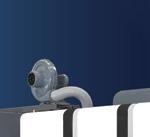
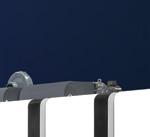




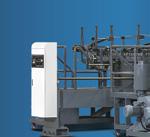
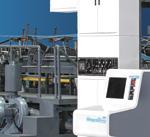





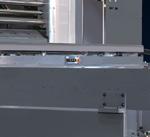



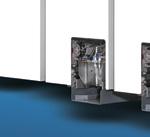










expertise, consider pivoting more heavily toward more recession-resistant industries, such as food and pharmaceuticals.
How Will You Differentiate Yourself?
How do you close the sale in a crowded market? Differentiation. Before you can sell, you need to know what you are selling. The brown boxes, primary packaging, or retail displays are only part of it. All your competitors sell those same things. Most take great care to meet quality expectations and have hired talented people. So, with the typical products, quality, and people off the table, what is left?
There are several ways to differentiate yourself. You can do something different than anyone else or do something better than anyone else. A third option is to expand your services, offering more so it is harder for customers to leave. In a mature industry, any of these may involve technology, artificial intelligence, or automation.
Differentiation can be found in the whole experience of working with your company. Looking holistically at what you offer allows you to compound the value. What value-added services are you offering, or what should you start offering, such as vendor-managed inventory, fulfi llment, or direct shipping?
To understand your differentiators, you must know your competitors’ strengths and weaknesses. Some say they don’t need to know what their competitors are doing; they only need to focus on what they are doing. You can’t create differentiation by ignoring what your competitors are doing. To be different means you are not the same as another, so you need to know the other you are comparing yourself with.
Asking your current customers why they choose you may provide insight into how you are different. Take that information and develop it into a compelling story of the value your company offers.
Value-driven Selling vs. Price-driven Selling
For most prospects and customers, price is a top priority. If you are in the position to offer low unit pricing, you will have an advantage in soliciting customers who are purchasing solely on price. Everyone else will need to focus on selling the value of their total solution. Th is is where having a differentiator becomes essential.
With pricing as a differentiator, the only thing that matters at the qualification stage is if they are willing to pay the price you are offering. With value selling, communication will be critical. The salesperson will have to ask probing questions to learn the pains the prospect is feeling.
Th is begins during the qualification stage of the sales process. The salesperson should ask open-ended questions that will give them insight into the prospect’s operations and fi nd the root of their challenges. It will also help determine how to present the value. They should let the prospect talk as much as possible without being interrupted and not be afraid to allow for “dead air.” It is human nature to avoid what is perceived as awkward silence in a conversation, so the prospect may talk to prevent it and then fi ll that space with valuable information the salesperson can use to help the prospect see the value. Listening is critical. The salesperson should ask additional open-ended questions as necessary to probe deeper to help the prospect see the value your company brings.
Example questions include:
• What brings you the greatest amount of frustration every day?
• How does your current lead time on boxes impact your business?
• How important is consistent delivery to you?
• When you have a late shipment, whom does that impact? What is the cost in lost productivity and dollars?
• How much time does your team spend scrambling to change
production and smoothing things over with your customers when shipments are late? Or how many resources are going into keeping an inventory of boxes for every SKU so this doesn’t happen?
By keeping the prospect talking, you may be able to help them uncover a pain point they didn’t know was solvable. Understanding the prospect’s goals and pains allows the salesperson to focus the solution on achieving those goals and relieving their pains. The solution may also improve the prospect’s job satisfaction and team morale and bring other nonmeasurable value.
Stay the Course
Targeting the right prospects, understanding your differentiators, uncovering prospects’ pains, matching the pains to your solutions, and demonstrating the value to your prospects will help prospects see the value your company offers. It is easy to lose momentum when all the news you hear is gloomy. But to keep a consistent flow of leads in your sales pipeline, remaining consistent with executing your sales process is imperative. Be consistent in calling, emailing, or texting prospects. They are also facing challenges, and with perseverance and communication, you may fi nd you have a solution that can help them.
Todd M. Zielinski is managing director and CEO at Athena SWC LLC. He can be reached at 716-250-5547 or tzielinski@athenaswc.com

Lisa Benson is senior marketing content consultant at Athena SWC LLC. She can be reached at lbenson@athenaswc.com

BOXSCORE March/April 2023 22 Selling Today
Two



















The best of two worlds
companies team up for your success! Koenig & Bauer Celmacch’s expertise with converters have enabled us to develop machines for you with the highest technological standards in the industry. This supports maximum reliability, quality and flexibility. Our range of products meet different investment strategies and productivity requirements, ranging from entry-level models to machines that are equipped with the highest levels of automation, sophistication and the highest throughput. Contact us for information on how you can become the next success story. tom.fitzgerald@koenig-bauer.com
Supervisor Development Must Be Consistent to Be Effective
 BY SCOTT ELLIS, ED.D.
BY SCOTT ELLIS, ED.D.
Remember when your dad threw you in the deep end and called it “learning to swim”? This is the everyday experience of many production supervisors. The purpose of this article is to outline a process that equips supervisors to lead the part of the business assigned with keeping promises to your customers. Those who would pursue this further may follow the steps described here using the Individual Development Plan course in AICC’s Packaging University.
Most supervisor training would be best described as “drowning avoidance.” Most supervisors rise from the ranks of machine operators. In the past, a machine operator was expected to possess the technical skills to produce quality products consistently and on schedule and to direct the crew toward that objective. Today, the model operator is also expected to lead and train the crew, often on multiple machines. Entering the deep end as a supervisor, the typical operator is expected to manage attendance, triage human resources issues, expedite orders with incomplete information, and liaise with the maintenance department, while training, motivating, and holding people to account. Only a small number of these skills are gained as an operator. Is it any wonder they flail and gasp?
The responsibility of equipping supervisors is one of the most influential investments in the culture of the company. These people represent management to the bulk of the employees. Their professionalism, including their technical and interpersonal know-how, is the hinge pin of company culture. It is a big job, and you have a lot to do. So, I suggest you start small.
You could launch a training program for all supervisors in the company. To do so, you will need to overcome the resistance of incumbent supervisors who may be capable and are yet unwilling to embrace professional improvement. I usually start with the willing, regardless of capability. I inform the team that the standards and performance measures are changing, and then I invest my time with the early adopters. When the increased capability of the willing results in an opportunity for advancement, you will have everyone’s attention. Then some will become willing, and others will self-select out of the role. My patience is long for the willing learner of any level of experience or even capacity. I will waste very little time on a person in possession of technical and interpersonal skills who chooses not to employ them.
The primary ingredient for success is consistency. Your way may not include online resources or one-on-one application meetings, but until there is a better “your way,” I invite you to try mine below:
1. Revisit the job description and assess its applicability to your current expectations.
2. List your expectations for the technical and interpersonal skills of a model supervisor in your culture.
3. Download the Supervisor Professional Development sheet provided in the Individual Development Plan course in AICC’s Packaging University.
4. Customize the list of Packaging University courses to fit the supervisor. You may choose not to require some of the more basic courses, or you may add those that are a better fit for your mix of business.
BOXSCORE March/April 2023 24 Leadership

































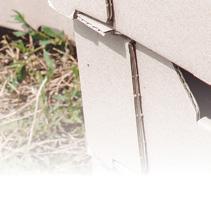





CorrWhite is our waxable white coating created to minimize rod wear while maintaining the necessary after-wax brightness and opacity. Frequently used as a base coat on kraft liners for color applications, CorrWhite offers exceptional brilliance and a light coat weight providing the best value in the market. Responsive and agile, Magnum Inks & Coatings offers excellent technical expertise and outstanding service. Contact us and learn how the right partner can make all the difference in your printing/coating processes. MagnumInks.com | sales@magnuminks.com | 877.460.8406 ©2023 Magnum Inks & Coatings. All rights reserved. The Corr of your printing success.
5. Add any destination courses you believe would be relevant. You may choose to add an internal experience (e.g., spend a week in scheduling or customer service) or another local offering (e.g., courses at Dale Carnegie or tech schools and community colleges).

6. Discuss the pace of learning that will fit the current workload and agree to target dates for the fi rst few courses.
7. Meet regularly to check in with questions such as:
• “What did you learn from that course?”
• “How do you suggest we apply that knowledge in our plant?”


• “What obstacles would we need to overcome to make that best practice a habit?”
8. Favor the person who proves to be willing and capable with advancement in compensation and responsibility. Concurrently, stop offering advancement to the unwilling, regardless of their capability.
9. Model willingness to gain professional and interpersonal awareness.
Your initial investment will take some time and effort, but once you have an equipped supervisor, there will be two of you to train the rest of the willing team members. Whether you model your process after the one I have provided or adopt your own, there is no alternative to investing in the capability of your supervisors. Consistency: Th is is the way.
Scott Ellis, Ed.D., delivers training, coaching, and resources that develop the ability to eliminate obstacles and sustain more eff ective and profitable results. He recently published Dammit: Learning Judgment Th rough Experience. His books and process improvement resources are available at workingwell.bz . AICC members enjoy a 20% discount with code AICC21.

BOXSCORE March/April 2023 26 Leadership
J&L C O N T A C T U S O R S C A N T H E Q R C O D E T O L E A R N M O R E Phone: 509-535-0356 Fax: 509-535-0399 info@alliancellc.com W i t h w i d t h s u p t o 2 1 0 " t h e J & L i s t h e m o s t v e r s a t i l e s p e c i a l t y f o l d e r g l u e r i n t h e c o r r u g a t e d m a r k e t ! Mark 5
Full Throttle with Full Servo
Full Servo Inline Set While Run FFG improves speed rating by up to 12.5%















The latest innovation from Latitude Machinery Corp. (LMC) features full servo, Set While Run operation providing improved accuracy and an improved speed rating across multiple sizes:

660mm x 1800mm: 450 sheets/min 1000mm x 2500mm: 350 sheets/min
















1200mm x 2700mm: 300 sheets/min
1200mm x 3000mm: 300 sheets/min
Full Servo can Reduce Noise Levels by 15%





















































































Machinery and Handling for the Corrugated Board Industry EVERYTHING CORRUGATED UNDER SUN IS THE OFFICIAL REPRESENTATIVE FOR TAIWAN-BASED LATITUDE MACHINERY CORPORATION, ITALY-BASED PARA, AND ISRAEL-BASED HIGHCON 1-410-472-2900 sunautomation.com
EVERYTHING CORRUGATED UNDER powered by Latitude Machinery Corp. (LMC) is a world-class
of Corrugated Converting Equipment, specializing in Flexo Folder Gluers and Rotary Die Cutters. SUN is proud to be the exclusive representative for LMC equipment, parts and service in North and Central America.
manufacturer
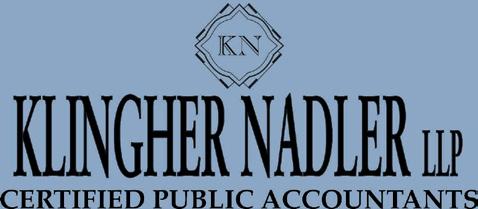
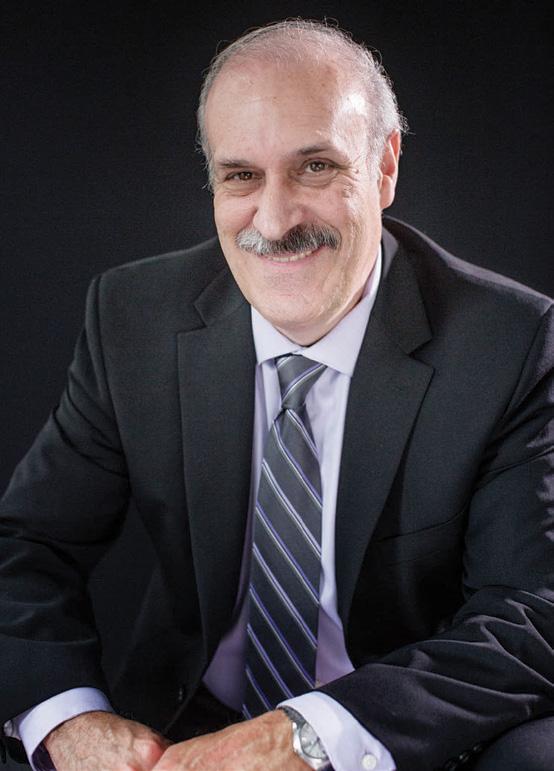
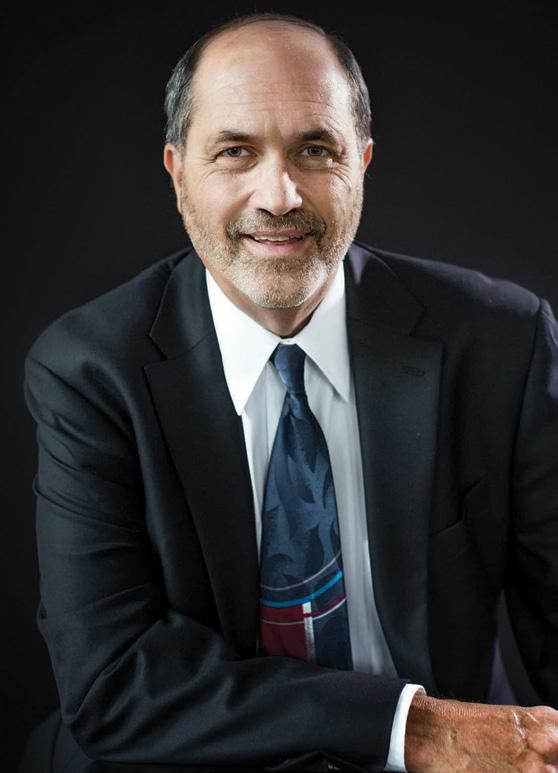
STILL the Industry Experts 580 Sylvan Avenue, Suite M-A Englewood Cli s, NJ 07632 (201) 731-3025 • Fax: (201) 731-3026 info@klinghernadler.com Planning for the future is one of your most important jobs. Selling your business, succession planning, equipment decisions and expansions require the best advice and strategy. We’ve been providing Business Planning Services to the independent converter for over 30 years. Need to make a big decision? Call us now.
Headline
BYLINE


Member Benefi ts
New Savings Program for AICC Members
AICC is bringing members savings through a new affi nity partnership with AICC member Procure Analytics.
Procure Analytics, a group purchasing consultancy that manages indirect categories for over 1,000 member companies with $1.5 billion in controlled spend, can off er members strategic sourcing, cost reduction, and tail spend management.

“Th is is a great opportunity for AICC members, both box converters and suppliers,” says AICC President Mike D’Angelo. “Procure Analytics can bring great savings and efficiencies, especially in today’s rising cost environment, all of which fall right to the bottom line.”
Procure Analytics was founded to address the complex challenges of a frequently ignored indirect spend category: maintenance, repair, and operations supplies (MRO). The nature of MRO supplies (millions of stock keeping units, thousands of individual transactions, hundreds of potential suppliers, and the relatively small cost for individual products) make MRO an under-managed category within most organizations.
Procure Analytics has since broadened its portfolio of savings programs to address several other under-managed indirect spend categories, including freight services, pallets, uniforms and rental garments, corporate travel, and many others.

“Procure Analytics is thrilled to partner with AICC,” says Billy Medof, CEO of Procure Analytics. “Leveraging $1.5 billion of group spending and a team
of 100-plus data-focused procurement experts, Procure Analytics enables independent boxmakers to buy critical items at pricing and terms on par— and often even better—than Fortune 100 companies.”
More information about Procure Analytics and other AICC money saving programs can be found at www.AICCbox.org/savings.
BOXSCORE www.AICCbox.org 29
Southern Carton Co.: Integrity, Quality, and Service
BY STEVE YOUNG
COMPANY: Southern Carton Co.
ESTABLISHED: 1977
JOINED AICC: 1985
PHONE: 931-359-6285
WEBSITE: www.southerncarton.com
HEADQUARTERS : Lewisburg, Tennessee
CEO: David Kennedy
Jim Kennedy knew nothing about the corrugated box business when, in 1977, he and his wife, Kate, founded Southern Carton Co. in Lewisburg, Tennessee. At the time, he was general manager of the Heil-Quaker plant there, overseeing 1,300 people manufacturing commercial and residential heating and air conditioning systems. Yet, as successful as he was at Heil-Quaker, Kennedy’s entrepreneurial instinct told him an opportunity to sell small quantities of corrugated boxes to customers had been long overlooked by the bigger integrateds.
“He always wanted to start his own business, and wherever he worked, he excelled,” explains his son David Kennedy, now CEO of the company. “He’s getting to the end of his career; he’s
56, 57 years old, and he saw a niche here where if you wanted 500 or 1,000 boxes, you couldn’t get them from the big guys, let alone 250 or 300.” This, as David tells it, was the genesis of Southern Carton, a story that reads like that of many independent sheet plants in AICC’s membership today.
“He started with a Rite-Size boxmaker,” David continues. “He, my mother, and brother Rick started cranking out orders for 100, 200 boxes at a time. They rolled the cert stamp by hand with a little stamp pad and then glued or taped them shut.”
David explains that the little company’s immediate success soon forced the acquisition of faster equipment. “Like everybody in this business, one thing leads to another, and pretty soon he says,
‘I need to find a taper or a gluer or a slitter.’ That leads to printer slotters, which leads to flexos, which leads to rotary die cutters—all of which we now have.”
Expansion, Extension, Equipment
Today, Southern Carton is a $20 million company producing 200 million square feet annually. Its 55 employees work a single shift in an 85,000-square-foot manufacturing facility with an additional 53,000 square feet of off-site finished-goods warehousing.
A family enterprise from the start, Southern Carton is now in its third generation of ownership. Barbara Kennedy, David’s wife of 35 years, has been an integral part of the company’s growth and history as confidante, sounding board,
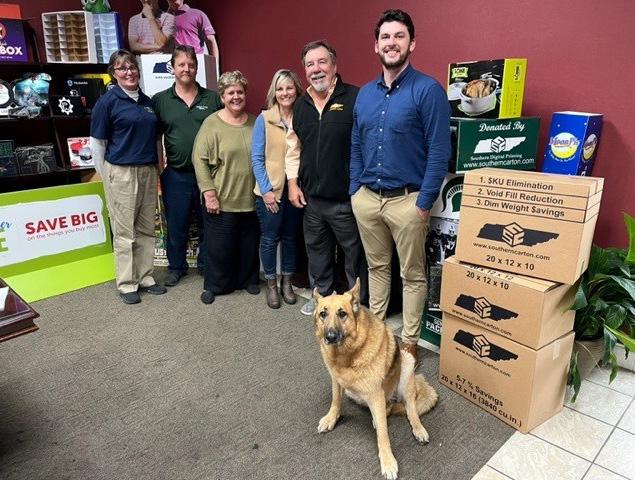
BOXSCORE March/April 2023 30 Member Profile
Southern Carton’s management team (from left): Angie Norman, plant manager; Eugene Peek, digital print manager; Diane Sharp, customer service manager; Angela Newman, customer service representative; David Kennedy; Connor Kennedy; and Zoe, director of plant security.
Photos courtesy of Southern Carton Co.
O u r j o b i s
u l l
s t


y o
r f

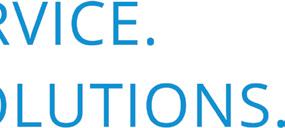
c i l i t i e s ' e n e r g y n e e d s , b u i l d a c u s t o m , c l i e n t - s p e c i f i c e l e c t r i c i t y o r n a t u r a l g a s p r o c u r e m e n t s t r a t e g y ,


P R O V I D E A R E A L - T I M E , A P P L E S - T O - A P P L E S C O M P A R I S O N O F S U P P L I E R P R I C I N G N E G O T I A T E O N Y O U R B E H A L F
a
y
y
u . A S A N E X T E N S I O N O F Y O U R T E A M , W E C A N : M I N I M I Z E B U D G E T A R Y R I S K P R O V I D E C U S T O M I Z E D E N E R G Y M A N A G E M E N T S O L U T I O N S S E T & M E E T E N E R G Y E F F I C I E N C Y & S U S T A I N A B I L I T Y G O A L S Endorsed By Since 2003 667.330.1159 ntemple@appienergy.com appienergy.com C o n t a c t y o u r d e d i c a t e d S e n i o r E n e r g y C o n s u l t a n t , N o e l T e m p l e , f o r m o r e i n f o r m a t i o n :
t o f
y u n d e r
a n d
u
a
a n d d o t h e h e
v
l i f t i n g f o r
o
and cheerleader. “Barbara and I discussed Southern Carton business almost nightly at the dinner table,” says David, adding that because of those discussions, two of the Kennedy sons—Connor and Sean—said, “I want to do that,” and they now work in the business, with Connor serving as president and Sean in production. (The Kennedys’ daughter, Meredith, is a nurse practitioner, and their other son, Patrick, is an engineer.)
The company’s values, as described by all the Kennedys, are “best in integrity, quality, and service.”
“Everybody here is so focused on the customer, whatever the customer needs,” David says. “Our unwritten motto is underpromise and overdeliver. Once a customer comes on board with us, they seldom leave.”
Connor adds that Southern Carton’s service ethos is grounded in what he calls a “servant” mentality. “We have a great sales team, and they’re all servants at heart,” he says. “They have a job to do, it’s true, but at the same time, they really just enjoy helping people. And I would say that about all our employees.”
The geographic reach of Southern Carton’s servant philosophy extends in a 130-mile arc from southern Kentucky in the north to northern Alabama in the south. Located about 45 miles south of Nashville off Interstate 65, Southern Carton’s central Tennessee location makes all these market areas an easy reach. Historically, David says, the pencil business dominated the local economies in the 1970s. “There were, like, nine pencil companies because cedar is so plentiful here and that’s what they were made of; there were pencil factories everywhere. Now, there are two,” he says.
The biggest economic shift to occur in the mid-South states since that time is the arrival of the auto industry. Beginning in the early 2000s, the region saw more than $10 billion in direct investment not only from legacy carmakers such as Ford and
GM but also newcomers such as Toyota, Hyundai, Volkswagen, and BMW. More recently, the region has seen a renewed investment wave to support production of electric vehicles—upward of $33 billion across the Southeast, according to online publication Electrek.
Southern Carton has been a beneficiary of this shift because with automotive manufacturing come the parts and systems suppliers that support it. “The economy here has changed so much that it’s probably one-third automotive,” says Connor, “and of our top 10 customers, four are automotive.”
The balance of Southern Carton’s business mix is made up of smaller yet thriving industry segments such as retail packaging firms, consumer and commercial cookware manufacturers, and food and beverage companies.
Serving this demanding market mix has required constant reinvestment in the production capability of the plant. Southern Carton’s equipment roster upgrades in 2022 alone totaled more than $8 million, and in 2023 and 2024, the Kennedy family is expected to invest an additional $4 million to $5 million. Before the 2022–2023 upgrades, Southern Carton’s equipment list was that of a typical service-oriented sheet plant: a Ward 66" x 125" two-color flexo-folder gluer, a Ward 66" x 115" rotary die cutter, a Lian Tee 26" x 78" two-color mini flexo, and a Marumatsu 86" x 205" jumbo printer slotter. In addition, the company has an Automatan labeler, a Fuji X3 digital printer, and a Zünd sample table.
The 2022 retooling of the company’s converting and finishing capability saw the addition of an Apstar 66" x 110" two-color rotary die cutter with an Alliance pre-feeder and A.G. Stacker, a J&L specialty gluer, a Baysek 170 die cutter with load turner, two Mosca unitizers, and three Mosca strappers. The upgrades went beyond converting and finishing operations to include such plant infrastructure as 400 feet of new conveyer
from Bay Machinery, two Bay Machinery load formers, a new Balemaster baler, and new cyclone. This March, Southern will take delivery of a new Apstar 66" x 126" two-color flexo folder gluer with an Alliance pre-feeder.
“We have basically retooled the plant with new or updated equipment in the past year so we are poised for growth,” David says. “Our region is growing; industry is moving to business-friendly Tennessee, and we now have a lot of fi repower to meet new customers’ needs.”
Scott Fray, general manager, agrees. “We now have a broader capability to supply many types of business segments—digital wide-format labels, flexo print—and we can run small boxes up to jumbo in-house.” Fray came to Southern Carton seven years ago after spending 24 years in the industry, predominantly at WestRock and Menasha.
‘Servants at Heart’
The box industry being a service business, all of the mechanical capability in the world will not sell a single item. Southern Carton’s market approach recognizes this; thus, exemplary customer service is enshrined as a principal company value. “The whole organization works with a sense of urgency whose only focus is on the customer,” says Fray, echoing Connor’s earlier description of Southern Carton’s employees as “servants at heart.”
“Our strengths have always been in our loyal customers and our loyal employees,” David says. “Many of our customers have been with us for over 20 years, and many of our employees have been with us more than 20. I believe the secret is to never take either for granted. [The adage,] ‘treat people like you would like to be treated,’ still holds true today.”
The roster of Southern Carton’s longtime loyal employees begins with Diane Sharp, who at 43 years of service holds a one-year seniority edge even over David, who just passed the 42-year mark. Sharp speaks
BOXSCORE March/April 2023 32
Member Profile
Unbox faster turnarounds

Make the move to digital – and unbox your business with the flexibility to accommodate fast turns, versioning requests, last minute edits, and changing buying decisions.

With the new EFITM Nozomi 14000 LED digital press for corrugated packaging and POS, you can reduce process steps from weeks and days to hours and minutes. And personalize runs from one to infinity at higher margins and with lower costs – all in a single pass.


Let’s build your brilliant future. Together. Scan to learn how corrugated converters and packaging printers are opening up new ways to say, “Yes!”



©
ALL
| WWW.EFI.COM
2023 ELECTRONICS FOR IMAGING, INC.
RIGHTS RESERVED.
Member Profile
of Southern Carton’s customers almost maternally. “It’s nice to be able to take care of customers. We know a lot of them; we’ve been doing business with most of them for lots of years,” she says. “We exchange grandkid photos. We talk about who’s getting married. It’s a lot of fun.”
Assisting Sharp is Angela Newman, whose 23 years at Southern Carton have been devoted entirely to serving customers. Yet, she says, she is still motivated by the diverse nature of the business and the creativity in meeting customers’ needs.

“What I find rewarding is being able to take care of the customers,” she says. “When I started, I thought a box was a box. I didn’t realize there were thousands of different styles of boxes and partitions. So, for me, it’s always a learning experience because I’m still learning, and I’ve been here 22, 23 years. Every day, there’s something different that goes on.”
Eugene Peek is supervisor of Southern Carton’s Fuji X3 digital press, a position he’s held for the past five years. But his experience in the company goes back 26 years beyond that, predominantly in plant supervision. “He’s the jack of all trades,” says David.
Peek has been steeped in Southern Carton’s history of growth, and he recognizes that history as a key part of the company’s success today. “I started when I was 18 so I’ve seen all of [the Kennedy] family grow up together,” says Peek. “I’ve seen it from a letter press, and I’ve been here since the first flexo we got. So yeah, I’ve seen every machine coming in as we grew over the years.”
Plant manager Angie Norman, like her coworkers, is devoted to the company and to the service of its customers. Even before she was employed there, she understood the company’s promise of reliability working in the shipping department for Sanford, then one of Southern Carton’s customers. “I was working part time at Sanford and unloading a truck from Southern,” she recalls. “Rick [Kennedy] asked me, ‘Are you happy
here? Do you want a full-time job? Why don’t you come over to Southern Carton and work for us?’”
Norman worked 21 of her 24 years at Southern Carton in shipping. “I was in shipping for 21 years, and the other plant manager retired,” she says. “So, they asked me to take the job. They trusted me. They had more trust in me than I had in myself to run it.” Norman credits her co-workers for much of her success, saying, “I keep smart people around me because I don’t know all the answers.”
Like her colleagues at Southern Carton, Norman has an unflinching commitment to serving the customer, no matter how big or small. “Yeah, everybody knows who our top five customers are, but we don’t treat them any differently than our lowest one,” she says. “If they call and say, ‘Hey, I’m out of boxes! I gotta have boxes,’ we’ll do whatever we can to get them.”
Looking Toward the Future
Southern Carton has had its share of challenges as have many other independent manufacturers, particularly in finding people. “I believe the major challenge facing our industry is labor— competent labor,” David says. “We have not faced the shortages many of my colleagues have experienced, but we have felt the pinch.”
Yet, the Kennedy family has positioned the company to take advantage of expected growth in the coming years. A third generation is now smoothly in place with Connor, the market is growing, and the family is actively reinvesting to take advantage of future opportunities. “My goal is to leave the plant in the best condition possible before I fade off into the sunset,” David says. “I didn’t want to leave Connor in a position where he’s having to replace equipment so I think he’s in really good shape for the next eight to 10 years.”
For his part, Connor credits his successful transition into the company
BOXSCORE March/April 2023 34
David and Barbara Kennedy, owners of Southern Carton Co.
to the family culture his father and grandfather established early on. “AICC has a lot of family businesses, and a lot of them have more family members involved than we have here. And you know, there’s some conflict in some of them,” he says. Pointing to David, he adds, “He and I talk every day, and yeah, we disagree on stuff all the time. But I thoroughly enjoy working with him and looking to grow what his life’s work has been—and his father’s life’s work. This is our livelihood, this is family, and now I look at all our employees that way, too.”
David’s optimism in his own company’s prospects extends to the corrugated industry at large. A member of AICC since 1985, Kennedy is now in his ninth year as part of a CEO Advisory Group, a group he calls his “corrugated brothers.” He sees a new era of opportunity for independent entrepreneurs in the box business. In his opinion, as companies further consolidate—even among independents—there will naturally be those customers whose mix just doesn’t fit into a bigger company’s higher-speed, higher-volume runs. He maintains a unique point of view that sees a renaissance of sorts in independent sheet plant startups. “I think there’s going to be a few more mergers and acquisitions, and then we’ll see a 1970s-style resurgence of independents starting again,” he predicts. “The more the industry consolidates, the more gaps there will be in the industry to fill, and independents will resurface always and fill that void. They will be box plant guys selling or producing for another, and they’ll want to start their own little sheet plant.”
Just like Jim Kennedy did in 1977.
Steve Young is AICC’s ambassador-at-large. He can be reached at 202-297-0583 or syoung@AICCbox.org


The innovative Hycorr Flexo Rotary Die Cutter Series has an updated KOLBUS feed section with servo-controlled drive technology, the latest operator-machine control interface, and KOLBUS 360 remote diagnostics. It also features a slit and score section and Serrapid quick change die-mount cylinder.

BOXSCORE www.AICCbox.org 35 Member Profile
I De Ile IIC . � �: : . 8 KOLBUS Hycorr Rotary
Reliability
Die Cutter Series Reputation of
Reliability, quality, and productivity. Learn More kolbusamerica.com �KOLBUS ' AMERICA INC. KOLBUS America Inc. T 216 931 5100 sales@kolbus.com service@kolbus.com parts@kolbus.com
SAFETY IS NO ACCIDENT
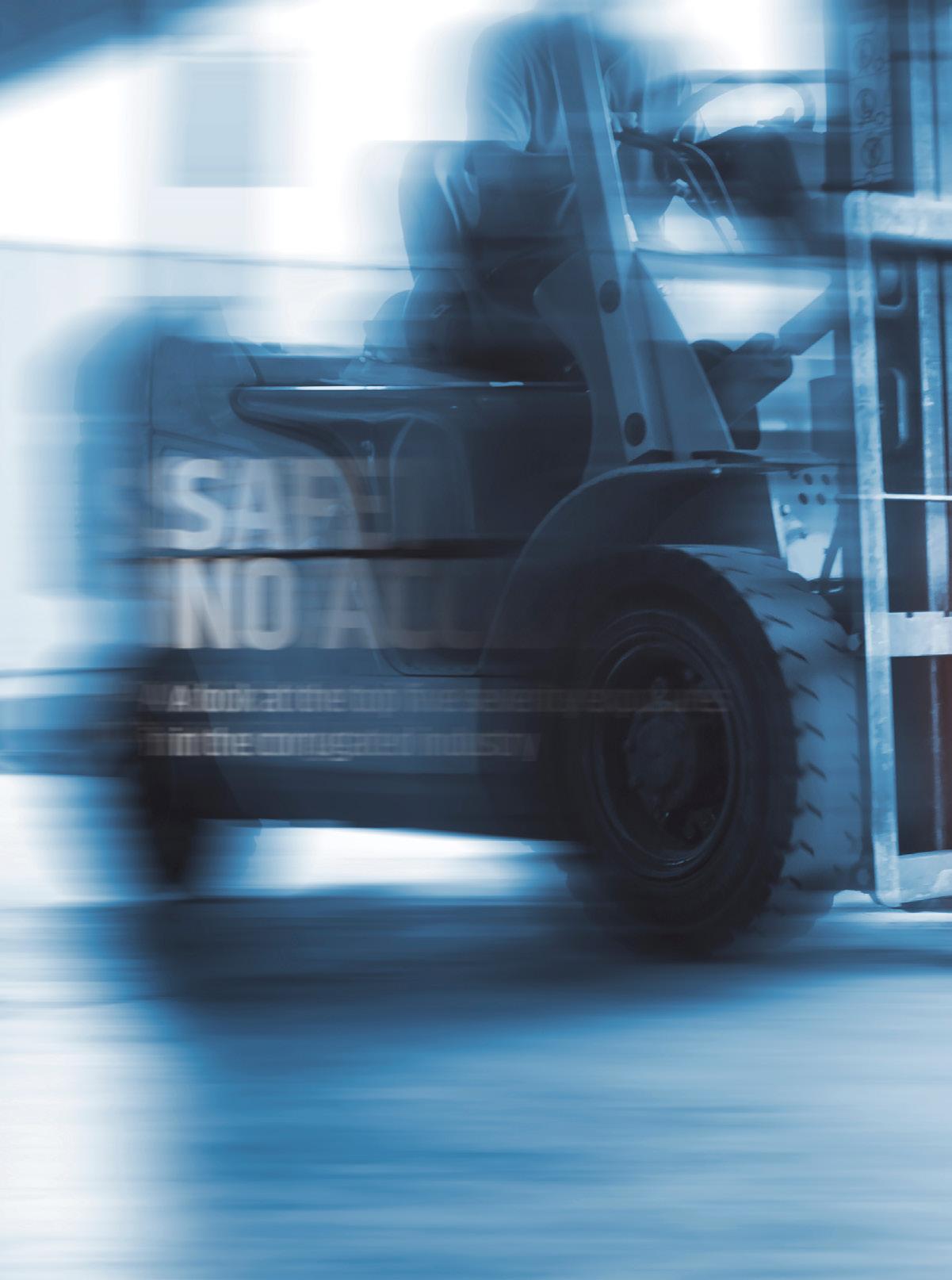
A look at the top fi ve severity exposures in the corrugated industry

March/April 2023 36
By John Kiefner
For those who have never stepped foot into a corrugated plant, it’s quite an eye-opening experience once past the front office. If I could turn back time, I would seek a safety consultant internship in a corrugated plant because no other industry offers anywhere near the variety of severe risk exposures.
While the frequency of injuries in the corrugated industry is often led by sprains or strains, trips, and cuts, the severe exposures are what keep me up at night. Rather than go through the Occupational Safety and Health Administration (OSHA) standards word for word, let’s look at some practical considerations for addressing fi ve severity exposures in the corrugated industry.

BOXSCORE www.AICCbox.org 37
1. Caught in Machinery



Entanglement within machinery can occur in a split second when allowing any of the following items to be brought onto the plant floor: hooded sweatshirts, loose jewelry, long hair, lanyards without breakaway straps, and rags wrapped around the hand. A written policy should be in place prohibiting all of the above, and managers should strictly enforce the policy with employees and temps.

When assessing machine guarding, keep it simple. Anything beneath 7 feet that can catch clothing, hair, body parts, etc., should be guarded. Where physical guarding is used, it must be fi xed (tool used for securing) or interlocked. Other types of guards may include light curtains, pressure-sensitive matting, pull cords, etc. Although not required by OSHA, it is strongly recommended that interlocks and

BOXSCORE March/April 2023 38
Digital cutting at an industrial level. Time to automate? #LetsTalkWorkflow! 1.5 m
presence-sensing devices be placed on a testing schedule as the failure of these devices does not always lead to a fail-safe outcome. Lack of a testing schedule will eventually result in an injury or a willful OSHA violation. While conveyor rollers are not designed as machine guards, they often function as such, protecting moving parts beneath. While the focus may be placed on production machinery, do not treat missing conveyor rollers lightly. Conveyors should not be in operation without all rollers in place.
OSHA’s lockout/tagout (LOTO) standard is designed to prevent “caught in machinery”-type injuries. However, minimum compliance with the standard is not suffi cient in the corrugated industry. Th ere are complexities within corrugated machinery that the LOTO standard does not
account for. Keys, rather than locks, are used to de-energize many pieces of equipment. It is essential to verify that no two keys are cut the same for other equipment or for sections of the same equipment. It is also recommended that employees be trained annually rather than just upon their hire and when new equipment is introduced. LOTO machine-specifi c procedures should be reviewed annually for accuracy, in addition to the “periodic inspection” requirement of the standard. When reviewing machine-specifi c procedures, pay particular attention to the “verify isolation” step, which ensures the lockout was conducted properly, leaving the equipment completely de-energized.
2. Struck by Forklift
Although forklift injuries are infrequent, the injury outcome is almost
always severe. Aside from required training (upon hire and every three years) and pre-shift inspections, additional steps can be taken to lessen the chance of a pedestrian being struck by a forklift. Where possible, protect pedestrians from forklift traffi c with walls, protective rails, bollards, etc. For pedestrian and forklift intersections, strobes triggered by oncoming forklifts can be eff ective, as well as strategically placed mirrors. All forklifts should be equipped with blue light systems, which shine a blue dot on the fl oor ahead of the oncoming forklift. High-visibility shirts and vests can also help make pedestrians more visible to drivers. Th ere are so many variables with forklift and pedestrian interaction that a variety of preventive measures need to be considered.
The Board Handling System

BOXSCORE www.AICCbox.org 39
BHS150. infous@zund.com T: 414-433-0700 www.zund.com
3. Fall From Heights
Employees conducting work above 4 feet must be protected by a railing or must wear a fall-arrest system. The former is preferred over the latter as there are many variables to a fall-arrest system, including the fact that the user must put it on. Areas of fall exposure in the corrugated industry are as follows:

MEZZANINES
Where product is loaded or staged on overhead platforms, mezzanine safety gates should be considered instead of removable rails or chains. Flip gate systems provide 100% protection during this task.
LOADING DOCKS
If above 4 feet, dock doors must be closed when the dock is empty. All unprotected areas of the dock should be equipped with an approved railing (42-inch top rail, 21-inch midrail).
ROOF WORK
Roof work performed within 6 feet of the edge on a flat roof requires a fall-arrest system. When working 6–15 feet from
the edge, a warning line must be installed. When working on a pitched roof, a fall-arrest system is always required.
FIXED LADDERS
Fall protection systems are required to be installed on fi xed ladders greater than 24 feet in height. Existing fi xed ladders are grandfathered until 2036, at which time they must also be equipped. Self-closing safety gates are recommended at the top of each fi xed ladder.
SCISSOR AND AERIAL BOOM LIFTS
While OSHA mandates the use of fall-arrest systems only when operating an aerial boom lift and not a scissor lift, falls frequently occur from scissor lifts when occupants climb onto the protective railings. It is strongly recommended that company policy mandate the use of fall-arrest systems when working within scissor and aerial boom lifts.
CLEANING ON TOP OF MACHINERY
If cleaning tasks at heights above 4 feet are not contracted out, physical protection or a fall-arrest system must
be considered. If installing a fall-arrest system, it is recommended that an expert in the field be consulted as there are many variables.
4. Confined Spaces
Confined spaces are rarely discussed within the corrugated industry, yet they present a significant risk if handled improperly. Confined spaces in the corrugated industry often include storage tanks, pits beneath machinery, manholes, dust collection systems, and more. Almost all confined spaces can further be defined as “permit required” as they contain an internal hazard (atmospheric, physical, etc.). Dabbling in confined space entry is a recipe for disaster. Therefore, after assessing and labeling the space, the following should be considered.
PREVENT THE NEED TO ENTER
In many cases, pits beneath machinery are entered for cleaning purposes. Many companies have fi gured out ways to minimize scrap from entering these pits. In addition, they have utilized manual “grabbers” to pull out larger pieces of scrap and have implemented vacuuming systems to extract the remaining portions.
CONTRACT OUT CONFINED SPACE ENTRY
Permit-required confined space entry can be complex and costly. Infrequent entry usually results in improper entry with varied levels of compliance. It is recommended that confined space entries be preplanned and contracted out using a company that specializes in confined space entry.
TEMPORARILY RECLASSIFY THE SPACE AS NONPERMIT
A permit-required confined space containing physical hazards, not atmospheric hazards, can be temporarily reclassified as nonpermit through proper LOTO procedures. Th is can occur only if a series of atmospheric tests have been conducted to determine there is no risk. It is common for pits beneath machinery to contain a
BOXSCORE March/April 2023 40


© Copyright 2023 HP Development Company, L.P. The information contained herein is subject to change without notice. Productive. Economical. Sustainable. Optimize the cost of manufacturing Flexo and Litho boxes, improve operational efficiencies and grow your business with digital post-print flexibility at scaled-volume production. Find out more: www.hp.com/pagewide-C550 HP PageWide C550 Press
physical hazard from moving machinery. In most cases, the pits do not present an atmospheric hazard and can be safely entered once lockout is performed to de-energize the machinery that presents the risk.
5. Combustible Dust
Combustible dust explosions can occur under specific circumstances, producing catastrophic results. The perfect storm includes the “fi re triangle”—combustible dust, heat, oxygen—and the dispersion of dust in a confi ned area. Dust particle size must be fi ne enough for it to be combustible. Don’t bother testing the dust at your plant because all corrugated plants produce combustible dust through one or more of the following processes:

trimming, die cutting, shredding, baling, and more.
DUST COLLECTION
Good housekeeping throughout a plant is the most essential element of a combustible dust prevention program. Th is includes capturing dust at the source through a dust collection system. When designing a system, utilize a manufacturer and installer with combustible dust expertise so all OSHA and National Fire Protection Association standards are incorporated within the system. In addition to dust collection systems, many within the corrugated industry are incorporating air dust fi ltration systems to capture the smallest dust particles that escape traditional dust collection systems.
PLANTWIDE CLEANING SCHEDULE
Dust in fine particle size will not only settle where it is produced but will travel throughout buildings and settle on any available flat surface, including machinery, piping, rafters, etc. OSHA has been known to issue citations under its “general duty clause” for dust accumulation that is the thickness of a dime. Setting up a plantwide cleaning schedule is imperative in preventing dust accumulation. When conducting the cleaning in-house, explosion-proof vacuums must be used.
TRAINING AND EDUCATION
Compressed-air hoses are located on most production lines in corrugated plants. The air hoses, if used incorrectly, present the opportunity for dust dispersion, which is one of the elements leading to combustible dust explosions. Employees must be educated on how dust explosions occur and must be informed that the air hoses are not to be used in a manner that allows dust to be blown into the air. The common practice of “blowing out” a forklift must occur outside and away from the building. Machinery that commonly accumulates dust should be frequently vacuumed rather than blown out.
Stay Vigilant
While frequency trends deserve continued attention, severity exposures often catch companies asleep at the wheel. Make time with your safety committee and management team to individually address each of the top five severity exposures. As you do so, utilize the AICC network for best practices as safety and risk protocol within the corrugated industry is quickly evolving.
John Kiefner, CSP, ARM, is vice president of risk control at Johnson, Kendall & Johnson.

BOXSCORE March/April 2023 42
There are complexities within corrugated machinery that the LOTO standard does not account for.


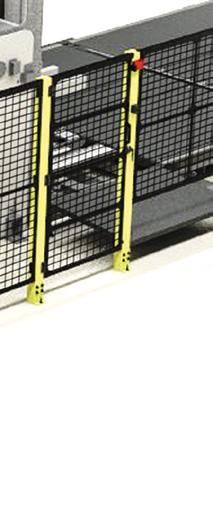


TAKING RESPONSIBILITY
New recycling laws for packagers are gaining acceptance across the U.S., but are they overreaching when it comes to boxmaking?
By Robert Bittner
BOXSCORE March/April 2023 44
In July 2021, Maine became the first U.S. state to require producers of packaged consumer goods sold in the state to finance municipal recycling programs. Known as extended producer responsibility (EPR) for packaging, the legislation was developed primarily to address funding and infrastructure deficiencies surrounding plastics recycling—yet all product packaging is subject to its directives, including printed paper, cardboard, and corrugated.
Other states have since followed Maine’s lead, passing their own EPR laws. Currently, proposed EPR legislation is being debated and discussed in many more. For boxmakers, this legal landscape has the potential for wide-ranging impact, from sales to pricing to production.

What Is EPR?
EPR programs of one kind or another have existed in the U.S. for years, covering such products as batteries, pharmaceuticals, mercury-based thermostats, paint, and carpets. But there have been no established state-based programs regarding packaging. Th at is changing due to the efforts of a group of state lawmakers known as the EPR for Packaging Network, along with the National Caucus of Environmental Legislators and organizations such as the Product Stewardship Institute (PSI).
A 2021 PSI news release highlights the significant points of Maine’s new law, which has become a model for other states: “Under the new law, Maine’s Department of Environmental Protection will select and contract with a stewardship organization to operate a packaging stewardship program that will reimburse and assist municipalities in providing recycling services throughout the state. Brand owners selling packaged goods must pay fees on all packaging materials to the stewardship organization to fund the system (italics added) based on the costs of recycling for each material, including infrastructure investments or resident
education needed to capture materials statewide.
“Producers will conduct an assessment of the statewide recycling system to determine the funds needed for the program, collection, and recycling infrastructure gaps in the state, and consumer education needed to ensure robust recycling,” the news release continues. “The law also provides an ‘on-ramp’ to the recycling system for more challenging packaging materials, allowing producers to establish, fund, and operate ‘alternative collection programs’ to facilitate reuse and recycling of these materials.
“Th is new packaging EPR program will generate recycling jobs, reduce greenhouse gas emissions from waste disposal, and address the inequitable environmental and health impacts of our waste system on vulnerable communities.”
Putting EPR within the context of the U.S. paper industry, Terry Webber, vice president of industry affairs for the American Forest & Paper Association (AF&PA), says, EPR “legislation introduced in multiple states—and passed in Colorado, Oregon, and Maine—would obligate producers, sellers, or brand owners of printing paper and/or paper packaging to pay for the end-of-life management of their products that flow into the marketplace.”
Exactly how that happens varies from state to state, based on the interests and needs of packaging manufacturers, regional waste and recycling companies, and local governments.
For example, one of the most common approaches so far—modeled in EPR bills for Oregon, Maryland, and Washington state—involves municipal management and reimbursement. Under this approach, local governments manage recycling operations and contracts, and a stewardship group (also known as a producer responsibility organization) reimburses them for the cost of vehicles, sorting, etc. In most cases, stewardship groups are funded by producers, who pay fees for the handling of certain
stipulated products. While fee specifics are left up to the parties involved, producers typically are expected to pay more for products that are more challenging to recycle or have fewer end markets.
Another EPR option is known as full producer responsibility, wherein the stewardship organization manages the entire recycling process. Hawaii’s House Bill 1316 has been described as a full producer bill because it allows packaging producers to contract with counties for waste collection and management.
Although 2021 initially was touted as the breakthrough year for EPR legislation across the U.S., the COVID-19 pandemic slowed the momentum. Since then, a handful of bills have passed, some have gone to committee, and others seem to be languishing. At press time, however, EPR bills have been either passed into law or proposed in California, Colorado, Maine, New Hampshire, and Oregon. Webber anticipates seeing additional EPR legislation soon in Connecticut, Hawaii, Illinois, Maryland, Massachusetts, Minnesota, New Jersey, New York, Rhode Island, Vermont, as well as other states.
Benefits of EPR
In an April 2020 white paper produced by the Northeast Recycling Council and Northeast Waste Management Officials’ Association, the authors noted various potential benefits provided by successful EPR programs, including:
• Dedicated, nontaxpayer funding to support collection, recovery, recycling, and management;
• Possible taxpayer relief for those who pay for recycling and management under the traditional system;

• A system that enables states and, possibly, regions to take a more unified approach to strategic planning around recycling; and
• Potential for increased investment in the end markets and recycling infrastructure.
BOXSCORE www.AICCbox.org 45
In addition, depending on program specifics, producers may have incentives to improve packaging design to make it more easily recyclable and to incorporate higher percentages of recycled content.

“EPR laws for packaging and paper products can provide sustainable funding for recycling by shifting the burden from governments and taxpayers to packaging and paper product producers and brand owners,” the paper sums up. “These are the companies that decide what packaging and paper products are available on the market.”
As evidence of EPR efficacy, the paper highlighted Canada where provinces with EPR programs “have increased recovery rates, ... bolstered recycling infrastructure, and grown strong markets for recycled material” and Europe “where EPR (for packaging only) has been established for decades,” leading to packaging recycling rates of 70%–80%.
“Other strategies, including voluntary product stewardship efforts, effect small, incremental changes in attempts to optimize the current system,” notes PSI in its Packaging EPR Tool Kit. “EPR is the only large-scale solution that takes an entirely different approach to create a much-needed, significant transformation in the entire system.”
Can One Size Fit All?
One aspect shared by almost all U.S. EPR legislation—proposed and passed into law—is an all-encompassing approach to packaging recycling that treats cardboard, corrugated, and printed paper the same












as flexible plastic, metals, and sometimes even electronics and large appliances.




While acknowledging the clear benefits of improved recycling across the board, Webber sees this broad, one-size-fits-all approach as potentially too heavyhanded where boxmakers and the paper industry overall are concerned. It has the potential, he says, to create “onerous administrative and fi nancial obstacles for the paper industry, which could affect our ability to make continued critical investments in recycling and manufacturing infrastructure.
“Paper is a highly recycled material made from a sustainable natural resource,” Webber points out. “More paper is recycled in the U.S. every year
than plastic, glass, steel, and aluminum combined , and successful recyclers like the paper industry should be exempt from fees designed to improve the recycling rates for other less recycled products.”
How brand owners will pay these additional fees is left unsaid in the legislation. If they are not passed along to the end consumer through higher prices, they will need to be created through economizing elsewhere in the supply chain by using lower-cost materials or fewer materials overall and/or applying price pressure on boxmakers and packagers themselves.
It is also unclear whether such fees

BOXSCORE March/April 2023 46
“More paper is recycled in the U.S. every year than plastic, glass, steel, and aluminum combined , and successful recyclers like the paper industry should be exempt from fees designed to improve the recycling rates for other less recycled products.”
—Terry Webber, vice president of industry affairs, AF&PA
produce the intended results. “In British Columbia, often cited as the model EPR program, research has found no evidence that the steward-operated EPR program results in cost containment or increased recycling performance for paper,” Webber says.
America’s paper recycling system has inherent complexities that need to be understood and incorporated if EPR guidelines are to be truly effective, Webber says. So far, work still needs to be done in this regard, with the existing system being threatened by “poorly designed EPR legislation under consideration in several states. These EPR bills may upend paper recycling’s success because they fail to differentiate materials with high recycling rates and healthy end markets— like paper—from others that are difficult to recycle or have low recycling rates.”
For a better alternative, Webber points to California’s recent EPR legislation, State Bill (SB) 54, which was passed into law in June 2022. Webber calls it “landmark producer responsibility legislation.”
“SB 54 provides an ‘off-ramp’ for materials—like paper—that demonstrate robust annual recycling rates,” he says. “Any producer that can demonstrate to the state recycling agency that their product is maintaining a 65% recycling rate or higher before the program starts [or is maintaining a 70% recycling rate afterward] will be allowed to opt out of paying for participation in the larger producer responsibility organization. Th is fi rst-of-its-kind ‘off-ramp’ is a notable policy mechanism,” Webber says, “as it seeks to reinforce market-based success and voluntary industry investment, an approach, which is in stark contrast to ‘one-size-fits-all’ EPR policies.”
Leading the Lawmakers
Legislators may not realize the advances made by the paper industry when it comes to recycling, Webber notes, so they may see broad EPR laws as a necessary
step. AF&PA is one of the organizations working to address that.


“We are encouraging policymakers to recognize the paper industry’s accomplishments, including our 68% national recycling rate for paper in 2021—a rate on par with the highest ever achieved—and our voluntary commitments to invest $5 billion by 2024 to enhance capacity to use recycled fibers in paper products by nearly 25%,” Webber says. “These critical contributions, totaling nearly $2.5 million per day, will continue to ensure a strong end market for recycled paper fibers collected in cities and towns across the U.S.”
He encourages boxmakers and other AICC members to help deliver this information to the nation’s lawmakers. “While AF&PA has taken the lead in opposing onerous EPR legislation, we cannot do it alone,” he says.
“We need industry support to engage and amplify our efforts. Th at’s where advocates for our industry can play an important role. All who have an interest in the success of our industry and paper recycling have the power to be effective and advance a sustainable future through advocacy engagement.
“The best conversations with policymakers start at the local level, and they want to hear from our industry,” he says. A key
part of those conversations involves educating policymakers about the efforts and investments the paper industry has made to expand access to community recycling programs and create thriving end markets for recycled materials, both of which have contributed to increased recycling rates. At the same time, legislators need to understand “how poorly conceived EPR proposals could hurt industry investment and negatively impact paper recycling,” Webber adds.
“The industry needs your voice now more than ever. Your perspective can give policymakers knowledge on how our essential industry makes significant contributions to the circular economy and paper recycling. As we look to the future, our paper recycling system should serve as a model for how smart investments, policies, and regulatory decisions can expand access to recycling programs, increase recycling rates, and create robust end markets for recycled materials.”
Robert Bittner is a Michigan-based freelance journalist and a frequent BoxScore contributor.


BOXSCORE www.AICCbox.org 47
BOXMAKERS BEWARE
By M. Diane McCormick
Boxmakers know boxmaking, not cybersecurity. “You may be an expert in manufacturing, but you probably are not an expert in computer networks,” says Ronald Menold, Ph.D., director of cybersecurity services at COSECURE.
And yet, Menold and industry insiders agree: Cybersecurity is essential to preserving that manufacturing business. Today’s manufacturing is highly vulnerable to cyberattacks that can halt operations, cost huge sums of money,

compromise the privacy of employees and partners, or even wipe out the business.
It’s time to prioritize cybersecurity and take the basic steps needed to update systems and policies to prevent cyberattacks before they do their damage.
Tempting Target
In the lingo of cybersecurity, manufacturers offer a “high surface area” for hackers of all types. Their systems house a wealth of information malicious actors can exploit. Hackers might conduct
a “drive-by” attack, swooping in when they find a breach, or they could pose an “advanced persistent threat,” waging a constant assault, trying to break in for a purpose.
Manufacturing is vulnerable on multiple fronts. Defunct operating systems—even a computer in shipping running perfectly fine on Windows 7— are no longer automatically updated. A slipup by a connected vendor can crack open the door, like the heating, ventilation, and air conditioning vendor phished
BOXSCORE March/April 2023 48
Protecting your systems is more than smart security—nowadays, it’s essential to your business
into sharing passwords that caused the infamous Target breach of 2013. Operating systems storehouse Social Security numbers, intellectual property, and trade secrets. And of course, they conduct huge fi nancial transactions daily.
Hackers want payouts through ransomware attacks that hold data hostage. They can interrupt service for ransom or competitive advantage. They might want to undermine a rival nation’s security by tapping into critical industries. Or they can steal intellectual property for another
business to use—without the upfront investment the victim company put into it.
Forget the stereotype of the hoodiewearing, basement-dwelling hacker, says Menold. Today’s hackers sit in cubicles, working 9 to 5. By earning commissions, they are incentivized to “get your money because they get a cut of it,” he says.
The Human Element Business email compromise is the most common form of hacking, constituting 80% of incidents, says Menold. Human
error is its driving force when employees are clicking on a compromised link and sharing sensitive information, or visiting infected websites, all of which can set off a chain reaction of cyber compromise.
Once in, hackers often angle their way to the people who control the company’s money. With that, they gain access to hundreds of email chains regarding financial matters. By simply duplicating the emails but subtly altering an address— “.co” instead of “.com,” or substituting a number “1” with a letter “l”—hackers can

BOXSCORE www.AICCbox.org 49
look like legitimate vendors. They might share the news that they have changed banks to dupe the unsuspecting recipient into sharing electronic fund transfer information or depositing bill payments into a fraudulent account.
“Th is happens again and again and again to the tune of hundreds of thousands of dollars to millions of dollars per incident,” says Menold. “It’s instant gratification for hackers because a wire transfer is pretty much immediate and nonretractable after 24 hours. You may be wiring to a U.S. bank, but then it’s immediately rewired to a non-U.S. bank.”
A business can also be exploited as the vehicle for hackers to spoof other companies. The hacker can seize documents or even fi nd them floating in cyberspace and then send identical versions that dupe the recipient into transferring money or sharing sensitive information. Although such incidents don’t always involve or interrupt the company whose documents are spoofed, they can erode trust among partners.
“We have tightened up our controls, especially in fi nance, because they are very susceptible to these cybercriminals,” says Terri-Lynn Levesque, vice president of administration at Royal Containers. “Spoofi ng is probably one of the hardest to catch, unless you’re really diligent. Trust is broken so quickly without you even knowing, until it’s too late.”
Creating a Cybersecurity Culture
While humans cause most cybersecurity incidents, they are also “the fi rst line of defense,” notes Levesque. “If we become very blasé and lackadaisical about it, that’s

when we become very vulnerable,” says Levesque, who serves on the board of AICC and AICC Canada. “Any staff who has a company email address has a key to our cyber front door.”
At Pratt Industries, employees are trained to report any missteps immediately—no consequences—says Juan Merelo, technical services manager. Employees are told, “If you see something, say something.”
“Ninety-nine percent of the time, it’s nothing, but our motto is ‘The bad guys only need to be right once. We have to be right 100% of the time,’” says Merelo.
BOXSCORE March/April 2023 50
“If we become very blasé and lackadaisical about it, that’s when we become very vulnerable. Any staff who has a company email address has a key to our cyber front door.”
—Terri-Lynn Levesque, vice president of administration, Royal Containers




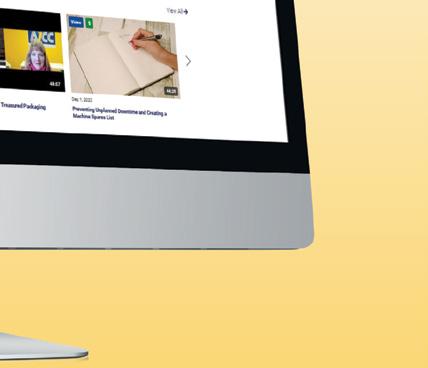
NOW.AICCbox.org YOUR ONE-STOP SHOP FOR AICC RESOURCES NOW.AICCbox.org Webinars • Interviews • White Papers • Podcasts • Industry Stats • AICC Experts • Virtual Plant Tours • And More
You can’t have quality without precision. The APSTAR HG2 offers print-to-print registration accuracy through as many as seven inline flexo sections. That precision creates less downtime and higher profits.
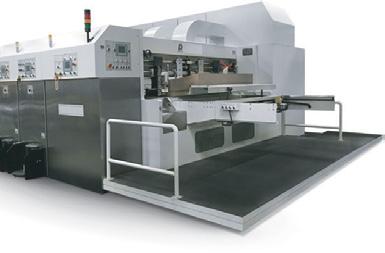
When you balance speed, print quality, and precision, you get an APSTAR… and that means better boxes.

CUTTER
APSTAR HG2 ROTARY DIE
Contact Haire Group to see how the APSTAR's precision can impact your bottom line. hairgroup.com Superior boxes require precise printing and cutting.
When a breach is in the news, Merelo’s team creates a teachable moment. They craft the incident in plain language and show how employees’ ties to the hacked entity, such as a social media account or a retailer’s credit card, make their employer vulnerable. “It’s always trying to adapt what is going on to things they can apply in their current day-to-day lives,” says Merelo. “We can provide the perfect playbook, but we are at the mercy of our weakest user.”
At Liberty Diversified International, Chief Information Officer Alla Johnson finds seasonal opportunities to put cybersecurity messaging in a relevant framework, perhaps warning of a fake package delivery message around the holidays. There are several logical times of the year to work in cybersecurity messaging, in addition to regular quarterly trainings and practice phishing campaigns, she says.
Menold warns of a tension between information technology (IT) and cybersecurity. While chief information officers (CIOs) want to keep the network open, chief information security officers (CISOs) are prepared to shut down all or part of the system when needed.
Like many others in manufacturing, Merelo wears both hats but knows when to prioritize cybersecurity. When Pratt Industries opens a new plant, he insists that engineering justify every open system, “and if it doesn’t make sense, it will not be open.”
In her dual role as CIO and CISO responsible for technology and cybersecurity, Johnson leads constructive dialogue among all stakeholders, focusing their solutions on what’s best for the business.
“Most of the time, you can come to a reasonable agreement on what is best for the business and what is best for security,” she says. “Communication is really the key.”
Leadership at the top plays a critical role in creating a culture of awareness and vigilance, adds Johnson, who encourages cybersecurity messages from the CEO, chief financial officer, and top executives of Liberty Diversified’s different businesses.
How to Protect
Like fighting fire with fire, keeping hackers at bay requires fighting persistence with persistence. Cybersafety demands consistent application of basic precautions.
TRAIN EMPLOYEES
Many manufacturers mandate regular training, especially among credentialed employees who send and receive email. Shift schedules and union rules can make it challenging to include factory workers, but it’s essential because they touch computer systems, too, notes Menold. Training can address how to spot fakes and why passwords must be revised regularly and never shared.

SEND PHISHING TESTS
Cybersecurity contractors can send regular tests, mimicking messages meant to hack into company systems. Employees who click the links can be referred for extra training, but as Levesque notes, they should not be shamed, rather they should be educated on weeding out the fakes from their genuine emails and texts.
UPDATE OR ISOLATE OPERATING SYSTEMS
The best way to protect production equipment is to isolate it or keep it free of vulnerabilities, says Johnson. Newer robotics equipped with an up-to-date operating system, firmware, and other software are not immediately vulnerable, but they still require continuous monitoring because “they’re 12 to 24 months away from being vulnerable,” she says. Any out-of-date operating systems should be updated or, at the least, monitored and isolated from the rest of the network. If isolation is the chosen path, it’s important to keep in mind that they remain unprotected, she adds.
SEPARATE IT FROM OT
Easier said than done at older facilities, but keeping IT apart from operating technology (OT) plants a firewall between the back office and the factory floor. When Pratt Industries’ manufacturing equipment must be physically accessed for support or troubleshooting, Merelo’s team will create temporary access and carefully
BOXSCORE www.AICCbox.org 53
Get On Board With Quality.
Print Finer Screens, Stronger Solids & Sharper Edges





monitor the work, denying access if the operator takes any steps outside a strict, predetermined set of allowable actions.
MONITOR ALERTS AND PATCHES



The U.S. Cybersecurity and Infrastructure Security Agency issues daily bulletins on emerging vulnerabilities and hackers’ latest tactics. Security officers must compare such alerts with the status of their own systems, sealing any vulnerabilities. In the case of “zero-hour threats” about vulnerabilities for which there is no solution, Merelo determines if Pratt can live without that supply and, if possible, sever the connection until a solution is found.
And don’t assume you can obtain security patches from equipment vendors for any given vulnerability, says Johnson. “They often don’t have patches available, or their patches may introduce different problems. If one is available, it needs to be tested thoroughly to ensure there are no interruptions to the business process. From time to time, they have to be reversed, so it’s important to have a good back-out plan,” she says.
AUTOMATE THREAT DETECTION









Your company’s security team can’t be there 24/7, but managed detection and response (MDR) services can be, applying advanced analytics and threat intelligence to blanket manufacturers in protections. As Johnson explains, an MDR vendor can run millions of transactions through a “secret sauce algorithm” to review transactions, produce alerts, and warn clients of vulnerabilities and unusual behavior.
INVOLVE TECH IN STRATEGIC PLANNING
Good fi xed-asset planning and budgeting practices can ward off obsolescence without the need for sudden, significant capital investments. “We’re starting to get into a cadence where we plan for these things instead of being surprised by them,” says Johnson.
BOXSCORE March/April 2023 54
CONVENTIONAL ANILOX ENGRAVINGS apexinternational.com
CONDUCT CYBER AUDITS
As manufacturers grow, they invest in industrial control systems and expand their networks. Such sophisticated operations could merit a cyber audit by a consultant with expertise in spotting vulnerabilities. Johnson advises companies to conduct regular audits against “a known and trustworthy cybersecurity framework,” such as the National Institute of Standards and Technology, paired with regular assessments from outside parties probing for weaknesses and checking the overall hygiene of the work environment and secure user credentials. Smaller companies might not have room in the budget for third-party audits, but they can conduct internal audits and harden their vulnerabilities, Menold says, perhaps discovering that more employees than necessary are accessing portions of the system.
LIMIT VENDOR ACCESS
For vendors with access to your system, “you want to make sure that their cybersecurity posture is at least to your level,” says Menold. Johnson’s Liberty Diversified uses a rigorous process to limit access to strict need, and anyone with access gets a username and password with multifactor authentication, just like an employee. Those accounts are audited annually. If an outside party needs access to solve a problem, they can access systems with the proper authentication. “While we prefer our systems not to be internet-facing, the reality of running a business is such that we must come up with reasonable controls,
which allow our factories to run smoothly and efficiently,” says Johnson.
CREATE A RESPONSE PLAN
A plan for responding to incidents and containing the damage indicates a maturity level that earns plaudits from Menold. But few companies follow through by testing them, in which case “it can be kind of useless,” he says. Plans should be reviewed at least yearly and tested via field or tabletop exercises. In particular, the plan’s communication elements should be kept up to date. Who declares an emergency? Are the physical and cyber spaces referenced still part of the organization? Are positions referenced by title or by name (that’s a no-no), and do those positions still exist? Levesque updates her company’s plan frequently, and she keeps a paper copy on her desk and a copy on her cellphone for access to critical phone numbers in case the system is down. Johnson and her team review segments throughout the year, devising scenarios to test the readiness of the plan’s key sections.
BACK UP DATA
For rapid recovery in case of an attack, always have backup data in off-site locations and in the cloud.

REFER TO A STARTER ROAD MAP
For companies that need to create a cybersecurity strategy, Menold offers a tip. Insurers have developed complex questionnaires to test the suitability of policyholders for cybersecurity insurance. Get a copy and review the questions (for example, “Do you require all of your employees to complete a security training course? What about all your contractors?”), and you have a road map to a basic cybersecurity program.
To Levesque, cybersecurity comes down to due diligence. She and her IT team create an annual checklist to keep hardware and systems up to date, but they also remain vigilant each and every day. “Our department will grow as we get bigger,” she says. “It has to. We have to remain diligent on keeping everyone educated as the cyber world changes and evolves daily. Preparing for the worst-case scenario is our only option.”
M. Diane McCormick is a freelance journalist based in Pennsylvania.

BOXSCORE www.AICCbox.org 55
“Most of the time, you can come to a reasonable agreement on what is best for the business and what is best for security. Communication is really the key.”
—Alla Johnson, chief information officer, Liberty Diversified International
The Associate Advantage
Is Your Approach to Networking Working?
Networking is an exchange of ideas, techniques, or skills that develops an individual’s professional skills and mentorship opportunities, but it’s not limited to whom we do business with.
Who Is in Your Network?
Prospects and customers. Prospects and customers tend to be at the top of our list at networking events. To ensure a return on investment, make true connections with them.
Suppliers and competitors. Effective networking involves maintaining relationships with other suppliers and competitors, which help establish respect between people and organizations.
Associations and media. AICC provides valuable resources to its members. National and regional summits, online training courses, in-person workshops, the Emerging Leaders group, and more are some of the reasons to include associations in your network.
Industry influencers and educators. People such as AICC event speakers, social influencers, and teachers at packaging institutions offer mentorship opportunities, industry knowledge, and connections to the next generation.
What Is Your Approach to Networking?
In-person networking. Attending in-person trade shows, regional seminars, and industry outings are some of the best approaches to building your network. As the COVID-19 pandemic taught us, you can never replace face-to-face interactions. Social media networking. Social media, specifically LinkedIn, has grown as a great networking platform for our industry, where you can join social groups, direct-message people, and position yourself as a thought leader.
Virtual networking. Digital meetings and events such as webinars, virtual meetups, and forums are relatively new ways to network. Though they grew in popularity during the pandemic, these options are great supplements to social and in-person networking.
Is Your Approach Working?
Proper networking is about relationship-building to help us understand the “why” behind what people do. Consider adjusting these areas:
Don’t be too salesy. Introduce yourself, not just your company. Lose the sales pitch, ask questions, and most importantly, listen. Understand your conversation partner’s needs and pain points, and tailor your conversation to those needs.
Have a plan. Research what companies are exhibiting at industry events, who the speakers are, etc., and seek those you want to meet. Listening to the Breaking Down Boxes podcast can give you insight into common box plant pain points. Be genuine. Get real on a more personal level. Remember someone’s family, favorite sports team, and other personal details to show you care about them as a person, not just as an addition to your network.
Follow up. Whether through email, phone, direct mail, or social media, the follow-up helps sustain your relationship. Check in and refer to personal details. If your networking approach is not working, try these tips. With diligence and practice, you can grow a strong network, a genuine reputation, and a knowledge of the industry as never before.
Tim Connell is director of sales at A.G. Stacker and is vice chairman of AICC’s Associate board.





BOXSCORE March/April 2023 56
JEFF DIETZ KOLBUS AMERICA INC. DIRECTOR JEFFREY.DIETZ@KOLBUS.COM
JOHN BURGESS PAMARCO SECRETARY JOHN.BURGESS@PAMARCO.COM
TIM CONNELL A.G. STACKER INC. VICE CHAIRMAN TCONNELL@AGSTACKER.COM
JOE MORELLI HUSTON PATTERSON PRINTERS & LEWISBURG PRINTING CO. IMMEDIATE PAST CHAIRMAN JMORELLI@HUSTONPATTERSON.COM
GREG JONES SUN AUTOMATION GROUP CHAIRMAN GREG.JONES@SUNAUTOMATION.COM
This course focusing on the corrugator dives into key sections and systems of the corrugator, including the wetend, dryend, and the corrugator control system.


While there are choices when it comes to the different inks you can use for printing, one thing is certain- inks are critical to a successful print job. This course will give you the basics you need to know as a printer or supplier of water-based flexo inks and how to engineer these inks for consistent, quality printing.
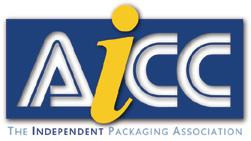


Free Online Education For more information about becoming an AICC Education Investor, contact Mike D’Angelo, President, 703.535.1386 or mdangelo@aiccbox.org. 100 Courses available, including: Created with the support of AICC Education Investor: Created with the support of AICC Education Investor: ESSENTIAL PRINCIPLES OF WATER-BASED FLEXO INKS See them all at AICCbox.org/PackU
THE CORRUGATOR
What the Tech?

A Process Improvement Plan








 BY LEVI COLVIN
BY LEVI COLVIN
When one thinks of a successful corrugated industry, it is common to think of a company with an outstanding safety record along with top-notch quality, low waste, and, of course, high productivity with margins that are so profitable, everyone is winning all the time.


In reality, most corrugated plants are low-margin, high-waste, low-production, and not as profitable as most desire to be.

This can all be attributed in some part to a sustainable and reliable structure that yields results day in and day out. A formula does work, and it starts with equipment, management, and dedication to a process improvement plan with everyone on the team involved.
This plan consists of an overview of the equipment with an audit to record calibration, excessive wear in parts, zero registration, and consistency in tooling (e.g., print plate 2" set back).




Once the audit is completed and reviewed with the management team, it is necessary to allocate the cost to correct the needed areas in the audit to bring the equipment back to the original equipment manufacturer. In the interim of calculating the cost of audit findings, the next step is to track all wear items on the equipment and determine the timelines of specified wear items so all wear items can be checked and compared with their specific timelines of wear on a tracking spreadsheet. This will allow for the knowledge of when the item wears out and when to change it
before failure. The tracking is necessary to calculate the cost to projected versus actual and will give the team dialogue of effectiveness during tracking periods.
It is crucial that the equipment is also set for weekly preventive maintenance, which would mean the machine is set for downtime each week for four to eight hours, depending on the equipment. A team of maintenance and operations staff would then begin to check the equipment for wear related to grease, oil, print chamber system components, and shafts, which areas of the machine move throughout the day. Most machines have a manual and care plan associated with them; this care plan should be documented for equipment reliability.
It is normal for any equipment to become dirty in the corrugated industry; most components on the equipment can be blown off, wiped down, etc. One important area that gets overlooked on any piece of finishing equipment is the ink area. Managing the ink process is important
and will keep many areas of any equipment clean and free from unwanted downtime. These ink checks should be done every half-hour to keep pH and ink viscosity at 8.5 pH to 9.5 pH and 18 to 23 seconds viscosity using a No. 2 Zahn cup method, respectively. For many plants, this is not common practice; if it were, machines would be free from ink on the floor, ink shafts, and bearings. Not managing ink creates a lot of unwanted and unplanned downtime.
With this plan, you will create a successful and reliable team, plant, and equipment suite that will yield sustainable results.
Levi Colvin is field service supervisor at Mitsubishi Heavy Industries America Inc.’s Corrugating Machinery Division. Any inquiries related to this article can be sent to Christine Little, senior sales manager, at 410-935-7835 or clittle@mhicorr.com

BOXSCORE March/April 2023 58

Strength in Numbers
Pruning the Garden: Business Planning for 2023
 BY MITCH KLINGHER
BY MITCH KLINGHER
The price of paper has begun to fall, and millions of tons of capacity are scheduled to come online domestically and in all our major export markets. Employee costs are at an all-time high, plant labor is still somewhat scarce, and it is doubtful our representatives in Washington, D.C., will agree to open the books on bringing in foreign workers to help alleviate the situation. The cost of capital has suddenly increased and is likely to continue increasing until the Federal Reserve sees the rate of inflation start to recede. Demand for packaging has slowed down. Inflation is still at its highest level since the late 1970s, and many economists think some kind of a recession will occur within the next year. A pretty bleak picture, right?
The answer is every cloud has its silver lining, and this may be an opportunity for you to consider “rightsizing” your business. For the past few years, most converters have operated at very high levels, in many cases straining their productive resources. Profit levels were generally at historically high levels, and many of you made significant investments in new equipment to help you keep up with this increased demand for your products. Th is equipment is now being installed, and many of you now have increased capacity—just in time for a possible business downturn. The conventional wisdom in the manufacturing world is to fi ll up your equipment with as many orders as you can fi nd because once you get past your break-even point, all of the incremental contributions will fall to the bottom line. Although I can’t directly refute that logic, I think the
key principle in business is to fi nd ways to maximize the long-term value of the enterprise. Increased profits generally increase enterprise value, but maximizing long-term value requires a little more thought and planning.
In my opinion, this should be a time for introspective reflection. For the past two years, many of you were just trying to keep up with an ever-increasing demand for your products and services, and while this problem is a generally good one to have, what I see in my travels is a loss in focus about what you are truly good at. Instead of focusing on your niche business, a lot of your productive resources have been utilized for business that is probably not going to be good long term for your company. In many cases, the business is
outsourced from your larger competitors that didn’t have the resources to take care of it, or it came from customers who were content to pay higher prices in the short run, due to the overall lack of productive resources in the marketplace. Good business in the short run, but probably not sustainable in the long run.
Your productive resources have been overtaxed over the past few years. Your employees have been working way too much overtime, you are wearing your machines out too quickly, you are likely running out of space, and you need more employees at almost every functional area and are having trouble fi nding them. If you proceed down the path of continuing to fi ll up your machines with business under the
BOXSCORE March/April 2023 60
DualCut

Cutting-edge from top to bottom
Maximise ability to meet every customers’ individual needs for inline die-cut box production, utilising just one machine: Available for the 175 QS Ultima, 215 QS Ultima and 245 QS Ultima, EMBA’s DualCut™ option offers true flexibility and uncompromised productivity

– from basic external box and pre-set top die-cutting, to complex full creasing and bottom die-cutting from inside the box.
The special DualCut™ integration combined with the intelligent Ultima™ platform, unique Non-Crush Converting™ and Quick-Set™, makes EMBA QS Ultima™ a new standard in converting operations. Inspired by the challenges of our customers, developed for ultimate results.
Without compromising your needs: EMBA QS Ultima™ with DualCut™
Liljedal Communication 2021 www.emba.com
TM
TOP die– cutter + BOTTOM die– cutter = DualCut™ = 2x Versatility
Strength in Numbers
theory that the incremental dollars will drop to the bottom line, then you will likely be part of a race to the bottom with no end in sight. The recent past has been one of almost unbounded price increases. The immediate future is likely to be one of higher competition and falling prices. You need to decide how you are going to play in this arena.
So here is your mission, should you decide to accept it. Take a hard look at your customer list with an eye toward trade business, broker business, low-margin business, short-run business, customers with difficult orders to run, business outside of what you feel is your core competence, and customers that are just generally difficult. Model your business without these accounts and orders. See if you can cut out a shift on certain machines and if you can reduce headcounts in other areas, such as customer service, design, maintenance, etc. Try to create a slightly smaller operation and focus on keeping your key employees happier. Profit dollars may go down, but profit margins should go up.
It may be time to prune the garden a little bit—pull out the weeds, let some of the fields stay fallow, and prepare yourself for profitable and sustainable growth. Focus on your core competencies and the types of business where you have an advantage over the competition. Keep your productive resources available for the good business, and set yourself up for a better future. The adage that sometimes less is more may be the right approach for 2023. If the goal is maximizing long-term enterprise value, then there will be periods of time when cutting back is the better strategy, and this may be one of them for you.
Mitch Klingher is owner of Klingher Nadler LLP. He can be reached at 201-731-3025 or mitch@ klinghernadler.com


BOXSCORE March/April 2023 62


EVOLVE
Your People Are Using AICC’s Education Programming – Make It Last!
Are you a Foundation for Packaging Education donor yet? If not, please join the foundation’s current donors, who have collectively pledged more than $2.7 million to the foundation’s cause.

It only makes sense that you do. Th at’s because the foundation’s cause is one of your causes: to ensure your employees— those already employed in box plants or in a box plant supplier’s business—have access to industry-related education programming. AICC offers more than 100 courses, ranging from Corrugated Basics to safety courses to How to Use a Ruler to leadership training.
These courses can help train your teams. They can serve as onboarding

courses for your new hires. They can serve to broaden a team member’s understanding of the business or to grow them into other disciplines in the box plant.
AICC develops a minimum of 10 new courses for its Packaging University platform annually. AICC translates at least fi ve courses a year into Spanish, which can be the primary language spoken on a box plant floor.
The foundation’s fi nancial strength makes the growth of AICC education programming sustainable so there is always something new for your team members to consume at Packaging University. AICC has educated nearly 13,000 people working in the industry since 2017.
During the COVID-19 pandemic, utilization of AICC’s Packaging University rose to new levels as team members idled at the onset of the pandemic continued to grow by educating themselves when they could not work on the shop fl oor. As production levels in 2023 may drop from the pandemic highs, educating your team should be an integral part of your business plan.
Education is an irreplaceable component of hiring and retaining people. To learn more about the Foundation for Packaging Education and to join its growing list of donors, please visit www.packaginged.org.
BOXSCORE March/April 2023 64 Foundation for Packaging Education



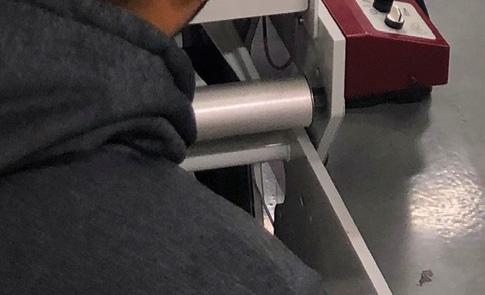





Support the Foundation for Packaging Education. Do You Support Industy Education & Growth? www.PackagingEd.org/Donate
International Corrugated Packaging Foundation
ICPF to Invest More Heavily in Education
BY CAITLIN SALAVERRIA
Education is one of the keys to attracting talent to the corrugated packaging industry. For years, the International Corrugated Packaging Foundation (ICPF) has worked with colleges and universities to advance student and faculty knowledge of the corrugated packaging industry.

I’ve been working in the new year to cement this foundation pillar by reaching out to our university contacts. I’m hoping to nurture current relationships and partnerships and get feedback on how to strengthen our industry’s messaging to students. I’ve provided information on current programs offered by ICPF, including the online corrugated curriculum, which teaches students about our industry; the career portal, which is a great resource for internships and jobs in the industry; and our newly active social media accounts on LinkedIn (International Corrugated Packaging Foundation) and Instagram (@careersincorrugated).
ICPF is also still working to place equipment, software, and other resources at these institutions to produce the best education possible for students interested in careers in our industry. Just recently, ICPF helped the University of Florida’s Institute of Food and Agricultural Sciences (UF/IFAS) packaging engineering program acquire a Kongsberg X24 prototyping table. The table will help add many hands-on learning opportunities for UF/IFAS packaging engineering students.
While these efforts are important, expansion is key to making a difference when it comes to industry recruitment. That’s why ICPF will focus over the coming years to improve industry education at two-year colleges and trade schools, high schools, and even at the middle school level.
Many of you have started on your own: connecting with young adults, introducing them to our industry, and encouraging them to pursue careers with us.
In November, Innovative Fiber and Independence Corrugated hosted a group of 15 aspiring high school engineers. They took the students on tours of both facilities, provided lunch, and sponsored a competition for the group to design and construct a boat out of corrugated that needed to float in a swimming pool. It was so successful the school has asked for it to be a yearly event for the students.
Another great example is the work being done by current AICC Chairwoman Jana Harris. Her passion is education, and she’s active with her local university, University of Texas at Arlington, as a member of the advisory board and volunteer for competitions. She is also starting a partnership with a local high school STEM program and has included ICPF in all of these discussions.

Through the work of Harris, Innovative Fiber, Independence Corrugated, and others like them, ICPF can create recruitment templates and case studies for use by all industry companies. ICPF can also provide additional resources such as videos, fact sheets, and testimonials to aid in conversations and promote a unified message about the many benefits and opportunities associated with choosing a career in corrugated packaging.
ICPF will continue to keep you updated on our expanded education efforts. Please reach out if we can assist you.
BOXSCORE March/April 2023 66
INTERNATIONAL CORRUGATED PACKAGING FOUNDATION
Caitlin Salaverria is president of the International Corrugated Packaging Foundation.
Snap the QR code to check out the November boatbuilding competition, part of a student event hosted by Innovative Fiber and Independence Corrugated, which also included facility tours and lunch.

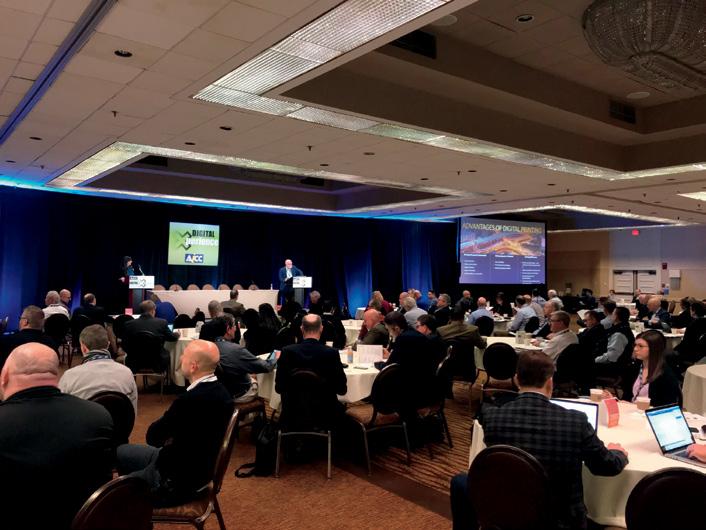






AD HOUSE: Xperience Chicago, IL May 22-24 AICC Packaging Xperience HEAR FROM BE PART OF THE CHANGE START YOUR XPERIENCE AICCbox.org/Xperience Co-located with Chicago TAPPI Trade Fair (May 22) KATE ASSARAF DIP SUSTAINABLE HAIR CARE ADAM PEEK MEYERS LAURA FOTI SPECRIGHT PETER RUSHFORD SHĀR AND MANY MORE DAVE NUTTER TAG JEB, THE BOXSMITH
The Final Score
How’s Business?
Afriendly greeting? Just making conversation? Really desperately seeking to know?
Generally speaking, “how’s business?” is asked often and everywhere around the world. These days, it’s asked because of the true level of uncertainty that exists in the economy at large anywhere and particularly in our great industry.
AICC does its best to track how our members are doing. We often poll membership. In midNovember, AICC surveyed members on some basic “how’s business?” questions:
• We always ask about paper—70% of respondents had no issues getting paper, while the other 30% ranged from on allocation to having difficulty in certain grades.
• Commodities other than paper—adhesives, trailers, strapping, replacement parts for equipment—were in short supply for roughly half of respondents.
• To the question “how do you see business in 2023?” 30% said better than 2022, 20% said the same as 2022, and 50% said worse than 2022.
• Interestingly, the above responses did not mirror the answers given to “how do your customers see their business in 2023?”—40% said the same as 2022; 60% said worse than 2022.
• “Do you have equipment acquisition or improvement plans in place for 2023?”—70% responded yes, 17% responded maybe, and 13% responded no.
• Respondents said their top three issues or challenges are staffi ng, equipment parts and lead times, and increasing costs.
The poll was a mixed bag backed by member comments. When we see members or speak with them on the phone, we always ask about business. There is a growing trend that business is slowing from the fever pitch of the past couple of years, and several would argue the slowdown began in earnest this past year. Th at said, the U.S. consumer held up their end of the bargain during the holiday season. According to Adobe Analytics, Cyber 5 (Th anksgiving to Cyber Monday) sales grew 4% year over year, and from November 1 to December 31, e-commerce grew 3.5% year over year— this despite increased foot traffic at brick-and-mortar retail. Annually, e-commerce topped $3 billion on 38 days in 2022 versus 25 days in 2021, a positive for boxmakers.
Manufacturing is making a comeback after clogged supply chains and transportation issues loosened. There is also an expectation of the reshoring of manufacturing, another positive for boxmakers.
Yes, inflation still exists for consumers and businesses. The year-on-year rate is declining, but it is likely underreported in terms of its true bite. Good news, bad news. The big question is how deeply a slowing of AICC member business from the pandemic-era highs will be felt. Many economists expect a recession in 2023 but also generally say it will be of a short duration.
I believe the industry will return to its long-term trend line of low single-digit growth in the next year-plus. Members are catching their breath, using AICC resources, relying on one another, and being resolute and disciplined.
AICC will keep listening to “could be better,” “surprisingly strong,” “good months, bad months,” and “holding our own”—keeping you informed and engaged.
Michael D’Angelo AICC President



BOXSCORE March/April 2023 68
CCM® OCT
THE GAME CHANGER
Engineered Recycling Systems takes decades of engineering experience and integration expertise to provide turnkey solutions.
We design, service and install world-class recycling and dust control systems. By providing our customers with equipment and system designs that deliver unprecedented levels of quality and craftsmanship, our solutions increase efficiency and cut labor costs.

All CCM® OCT-Filters meet NFPA, OSHA and local code requirements.

SIGNIFICANT ADVANTAGES OVER CONVENTIONAL DUST FILTRATION TECHNOLOGY


• Energy savings due to low pressure loss
• No compressed air required
• Maximize your productivity due to less downtime of your scrap and dust system
• CCM® OCT Filters = SAFE to operate and maintain
• No abort gate
• 55,000 square foot warehouse full of spare parts
www.engineeredrecycling.com info@engineeredrecycling.com


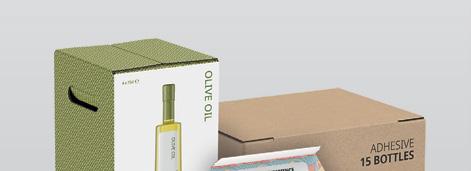










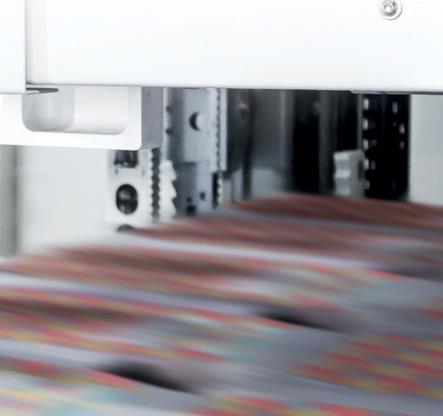
www.bobst.com For your kind of corrugated board MORE PERFORMANCE, MORE VALUE From pre-feeding to palletizing, BOBST connects every step of the modern corrugated packaging process, to deliver more performance and value for you. Interested? Find your local BOBST representative at www.bobst.com/contact ˍLeading connectivity








































































































































































































































































































 BY SCOTT ELLIS, ED.D.
BY SCOTT ELLIS, ED.D.
























































































































































 BY MITCH KLINGHER
BY MITCH KLINGHER





























































